






ou want new charts?
You got new charts! Explore the ocean with vibrant terrain & depth shading, using all-new TZ MAPS. Don’t just take our word for it. See for yourself. Scan here, and we’ll show you!



















ou want new charts?
You got new charts! Explore the ocean with vibrant terrain & depth shading, using all-new TZ MAPS. Don’t just take our word for it. See for yourself. Scan here, and we’ll show you!











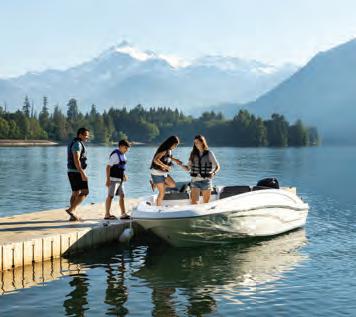






Embarking on the open water is an exhilarating experience, flled with the promise of adventure and relaxation. Whether you’re a seasoned sailor or a weekend cruiser, protecting your vessel with proper insurance is not just a choice—it’s a necessity. Explore the reasons why every boat owner should prioritize boat insurance for a worry-free voyage.
The open water can be unpredictable, with unexpected storms, collisions, or other potential accidents. Boat insurance can give you fnancial protection if there is damage to your vessel, providing coverage for repairs or replacement.
Accidents on the water can result in damage to other boats, docks, or even injuries to passengers. Boat insurance offers liability coverage, which can pay for damages or injuries you’re liable for while boating, up to specifed limits, and lawsuit costs if you’re sued. This includes damage you cause to another watercraft or if someone on or near your boat is injured and you’re found to be legally responsible.
Unfortunately, boat theft and vandalism are realities that boat owners face. Boat insurance has comprehensive and collision coverage that can protect you against events outside of your control, including theft and vandalism.
Accidents on the water may lead to injuries for you or your passengers. Boat insurance offers a range of optional medical payments coverage limits, helping to cover medical expenses if you are in an accident or someone is hurt on your boat, regardless of fault.
If you fnanced the purchase of your boat, most lenders require insurance coverage to protect their investment. Having boat insurance not only fulflls these requirements but also gives you peace of mind knowing that your fnancial interests are safeguarded.


Some water municipalities and marinas may require proof of insurance for docking or accessing certain areas. Boat insurance allows you the fexibility to explore different destinations without worrying about entry restrictions.
Emergency towing and assistance
Progressive boat insurance can include optional Sign & Glide® On-Water Towing coverage. If your boat is disabled or breaks down on the water, Sign & Glide® pays for on-water towing, jump starts, soft un-groundings, and fuel delivery.
Wreckage removal
If your boat sinks, Progressive boat insurance will cover the cost of removing your boat from the water (if removal is legally required).
Investing in boat insurance is not just about protecting a valuable asset; it’s about safeguarding the memories, experiences, and joy that come with your on-water adventures. Don’t let unforeseen circumstances disrupt your journey—navigate with confdence, knowing that Progressive boat insurance has you covered. Ensure a smooth and worry-free voyage, because when it comes to your boat, peace of mind is the ultimate luxury.
Scan to get a quote in as little as 4 minutes
learn more.




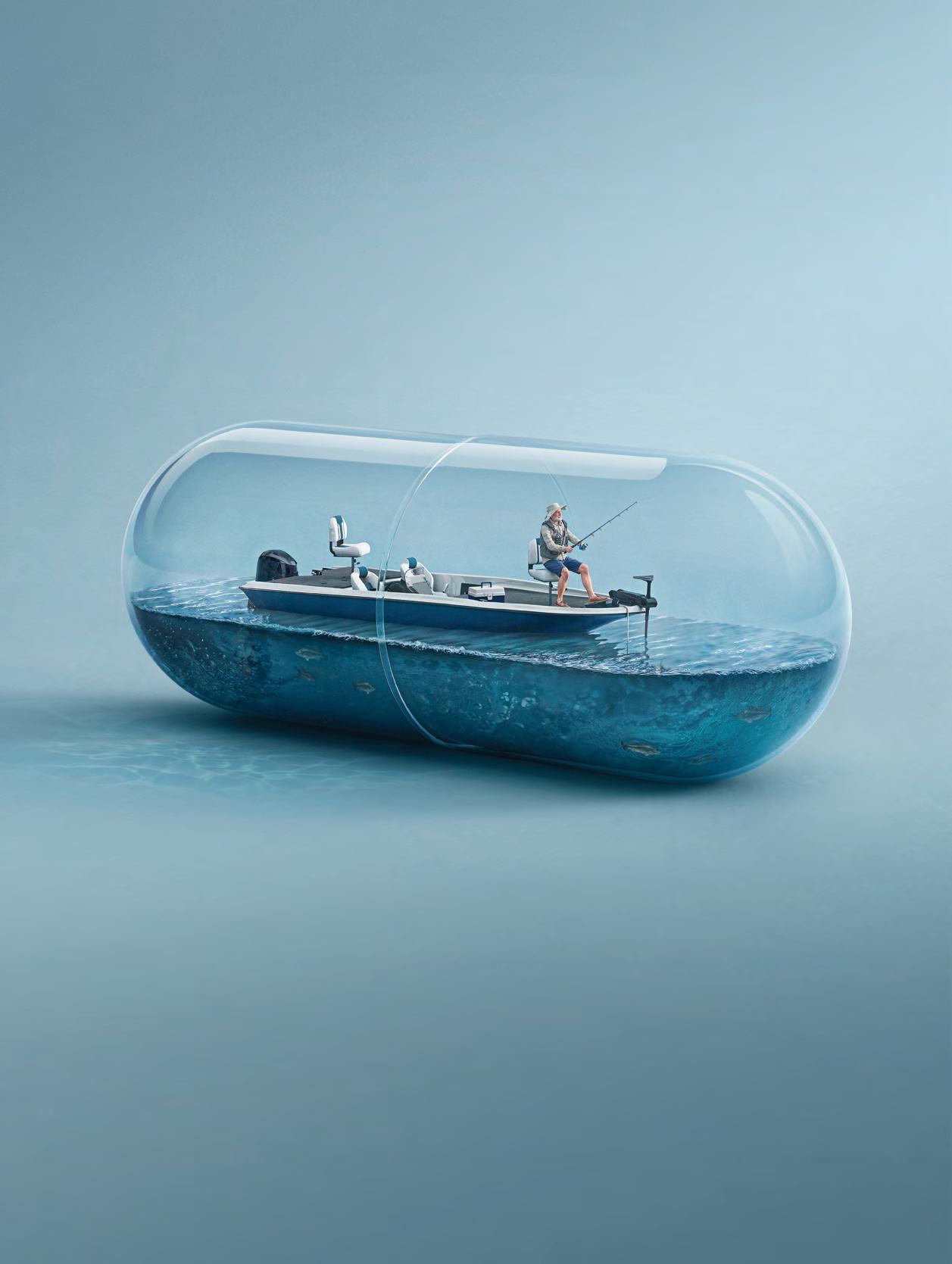
















THATCH MAGUIRE, EDITOR AT LARGE

Father’s Day is one of the best opportunities to take your kid !shing.
It’s a celebration of the powerful bond forged when dads pass down the timehonored tradition of !shing, a tradition that stretches back thousands of years. While !shing once put food on the table out of necessity, today it still feeds something deep within us. at ancient connection to the water lives on in every angler, whether they realize it or not.
Inviting your son or daughter to !sh on Father’s Day regardless of their age makes a timeless statement. It bridges distance, mends di erences, and rea rms love in a way few other gestures can. Even if the day ends without a single bite, the act of !shing together creates a bond that words can’t express. It’s not about the catch. It’s about the connection.
ere are countless lessons a father might teach a child, but carving out time to share a quiet day on the water—free from the noise and distractions of modern life is one of the most meaningful. By saying, “Let’s !sh together today,” you’re also saying, “Let me share who I am with you.” And that’s a gi no one forgets.
Don’t have a son or daughter? No problem. Take any kid !shing this Father’s Day. Whether it’s a neighbor, a niece or nephew, or a friend’s child, the impact is the same. You’re passing on something real, something rooted in tradition, and something that could change a young life forever.

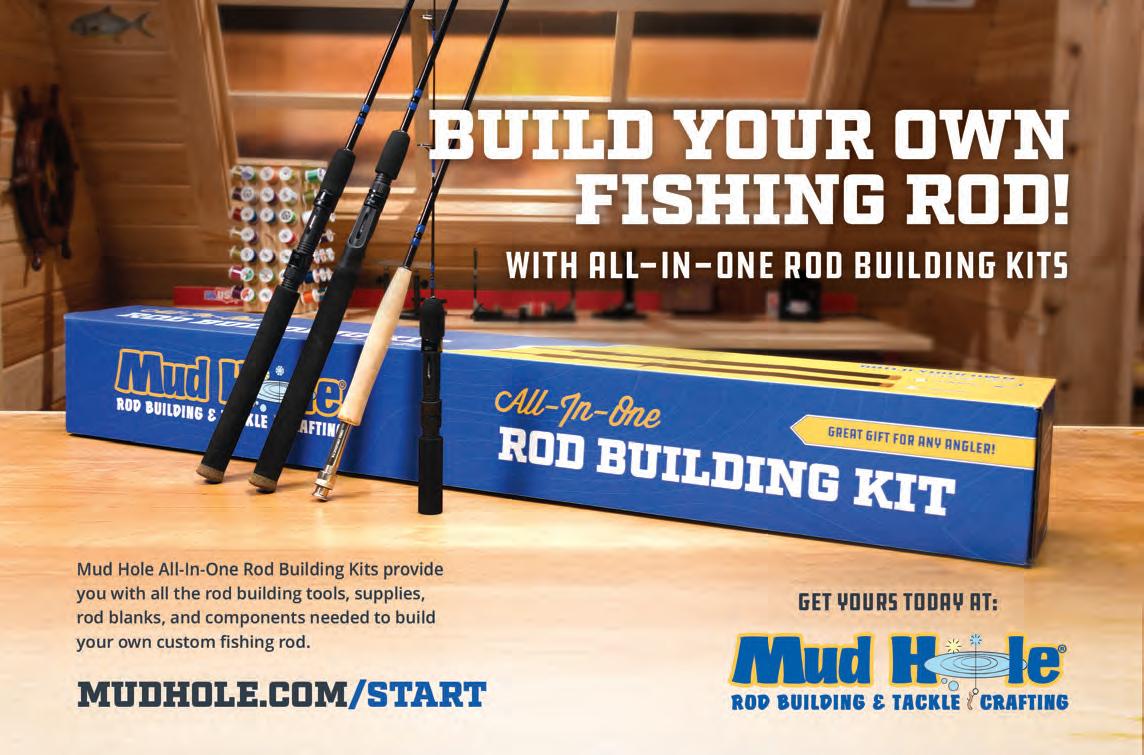

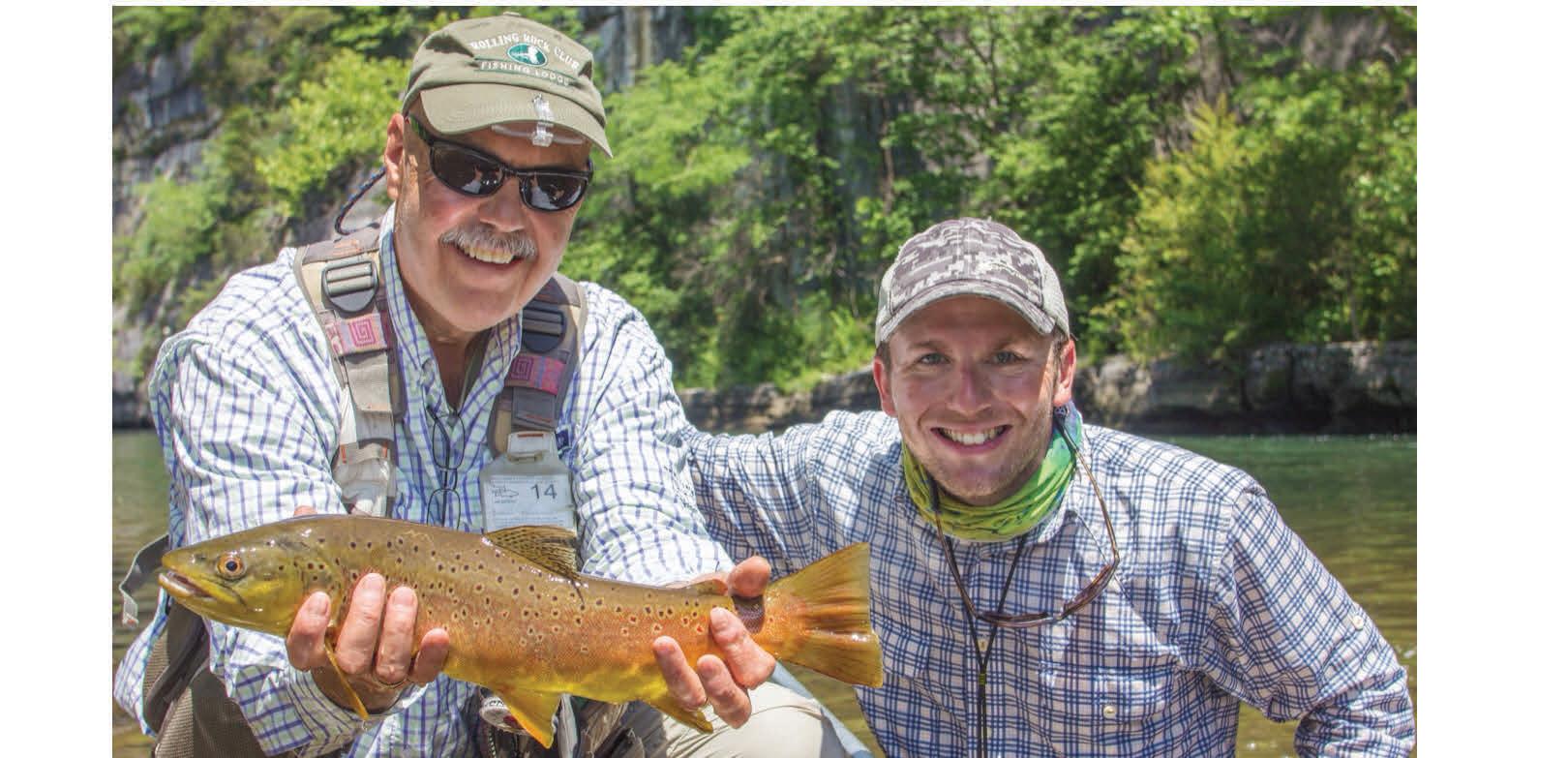






By Capt. Steve ompson
Targeting king!sh during their annual migration season o Florida’s east coast is a predictable event that coincides with the annual migration patterns of the Atlantic stock of king!sh. During the summer, anytime from midMay through August, when the water is warm enough for the kings to stick around, we all have a great chance of catching a tournament class king!sh, at almost anyplace we decide to !sh.
King!sh can be caught anywhere from the mouth of an inlet, on out to 200 foot depths, and that means that almost any seaworthy vessel can, and does, go a er these !sh during the “mostly calm” summer days.
Everyone has heard about the GJKT tournament winner that Fred Morrow caught at the tips of the north rocks, or Bob Johnson on his Traveler who won the aggregate, with two nice !sh, also right o the beach. What do these teams have in common? ey won in small boats with very little overhead, with very short runs to their !shing grounds. But they did their homework and had a plan, and went straight to where they were going to !sh. Because let’s face it, the small boater isn’t going to run all over the ocean chasing !sh that have already been caught. And those are not the only examples, this same scenario takes place every year
in tournaments up and down the Atlantic coast.
Another way to !sh on a budget is to not get caught up in the latest and greatest gear. Sure, you need quality equipment, but one can good used reels from friends, who are upgrading, or from yard sales or even at swap meets at your local o shore club.

As far as rods go, if you know what “feel” you like on your rods, you can !nd o name rods at sidewalk tent sales at your local tackle store, that perform as well as a custom rod, for a fraction of the cost!
To avoid buying that expensive bait, become pro!cient with a cast net! Kings get fat and happy on a steady diet of “pogies”, or menhaden found along our beaches. You need a heavy fast sinking net to have all the bait you want for a day’s !shing. No pogies, you say? Don’t worry, many king!sh over the years, have fallen to other baits than just a pogy. A pound of shrimp on tournament day could very well be a day saver. Croakers are great king baits, as well as blue runners and blue!sh. Ribbon!sh can also be used but are best caught a few days before and brined so they are easily trolled. If you like !shing the Party Grounds always have some sabikis on board. ese are small feathers on small hooks on a special rig that will catch fresh sardines and cigar minnows on most of the o shore reefs and wrecks.

Don’t be intimidated when you sign up to !sh any tournament. You have the same chance to catch a tournament winning king!sh as the next guy. And you do not have to drop big bucks to do so. Just do your homework, pre-!sh as much as possible and, come tournament day, have a plan and stick to it…and we’ll see you at the weigh scales!
Capt. Steve ompson is Chairman of Jacksonville Marine Charities / Greater Jacksonville King sh Tournament and a 40-year successful veteran of competitive king sh tournaments all over the Southeast. Contact him at (904) 251-3011 or email: gjkt@king shtournament.com.
Whether you’re chasing trophy fish or charting your next offshore course, your time on the water deserves the best in navigation and marine technology. Defender brings you UNBEATABLE PRICES and EXPERT SUPPORT on Lowrance and Simrad electronics—trusted by professionals and weekend warriors alike.


The choice for powerboaters and sportfishers. Get crystal-clear sonar, radar, and navigation that keeps you locked on target.

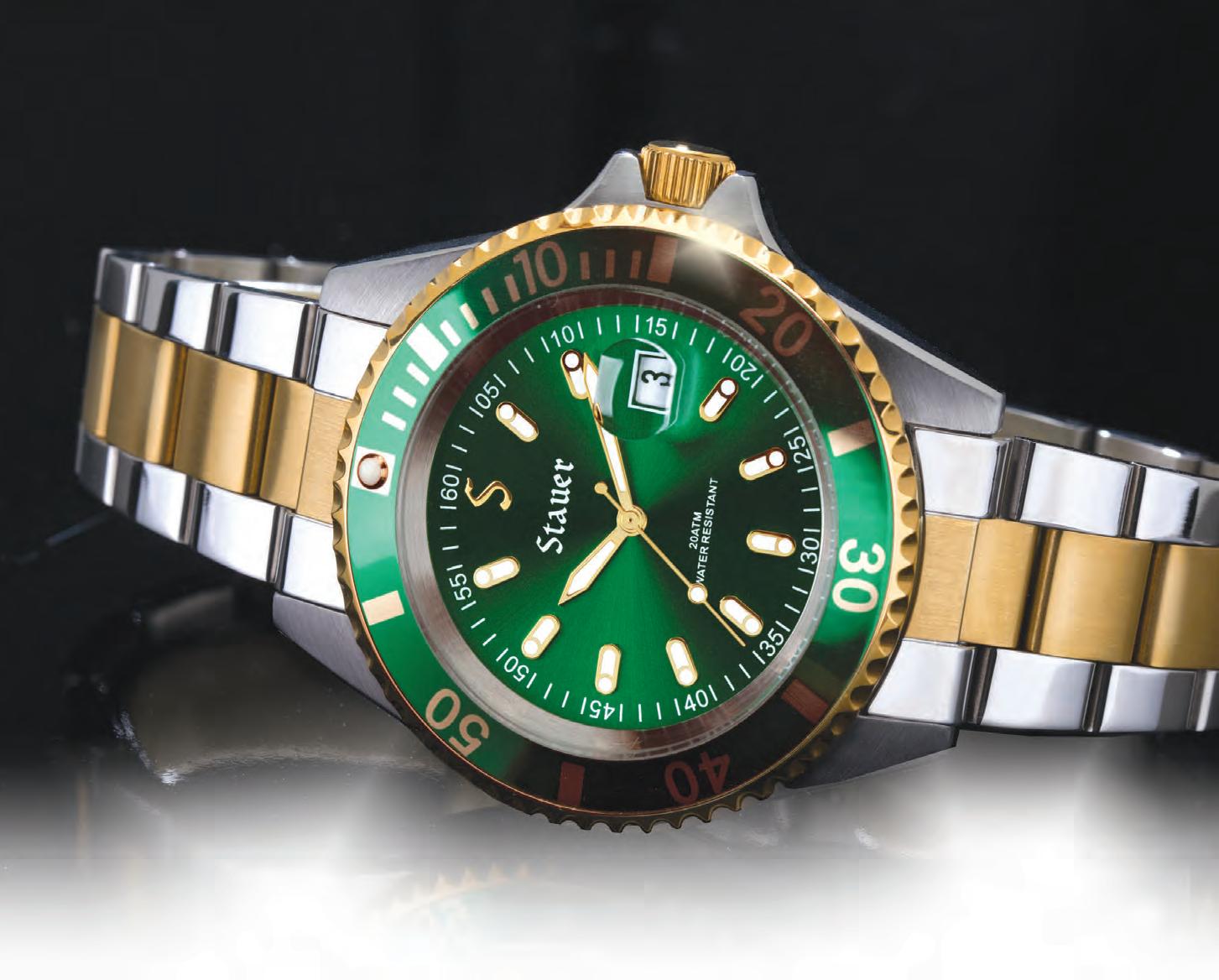
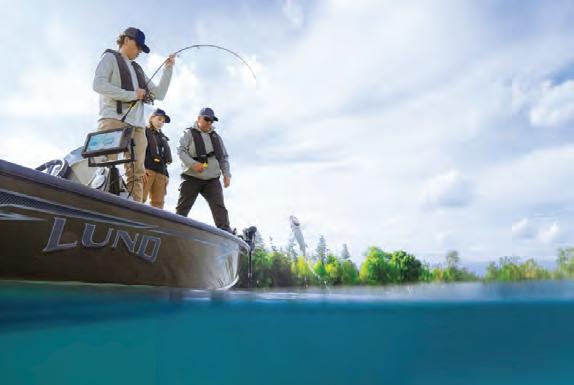





–– George Thomas, Noted watchmaker & historian



Every year in Basel, Switzerland, the world’s best-known luxury watchmakers gather to display their new timepieces. It’s a great event for spotting timepieces that standout–– in performance and in personality. We saw one impossible to ignore: a precision dive watch with an arresting green dial. But we also saw the five-figure price tag and knew we could bring our customers that exact same precision and stand out appeal for a whole lot less. The Stauer Evergreen Diver is that timepiece.
Built like a submersible battleship with a stainless steel case, caseback, and band, the Evergreen Diver is water-resistant down to 660 feet or 20 atmospheres, a feat facilitated by a hardened crystal and screw-down crown.
Green On Your Wrist AND In Your Pocket. You could pay an awful lot elsewhere for this verdant virtuoso, but the majority of the cost is in the big designer name upcharge. We think those guys are all wet. This is how you own a top-of-the-line dive watch without helping pay for some marketing guy’s yacht.


Satisfaction Guaranteed or Your Money Back. Wear the Evergreen Diver for 30 days. If you’re not completely happy, send it back for a full refund of the item price.
Limited Reserve. A watch of this caliber, with a price that won’t drag you under, takes 6 months to create and won’t stick around for long. Call today!


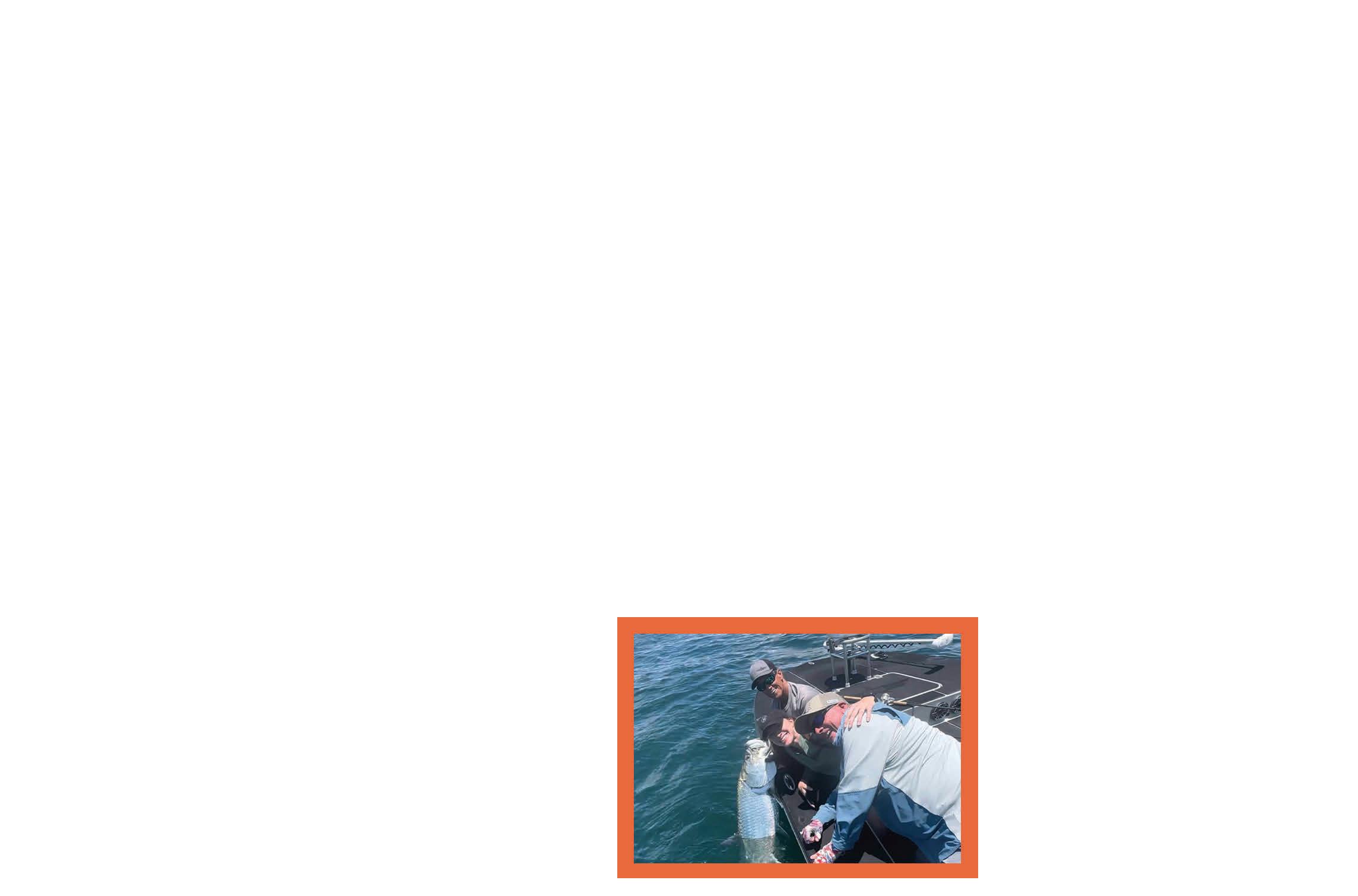
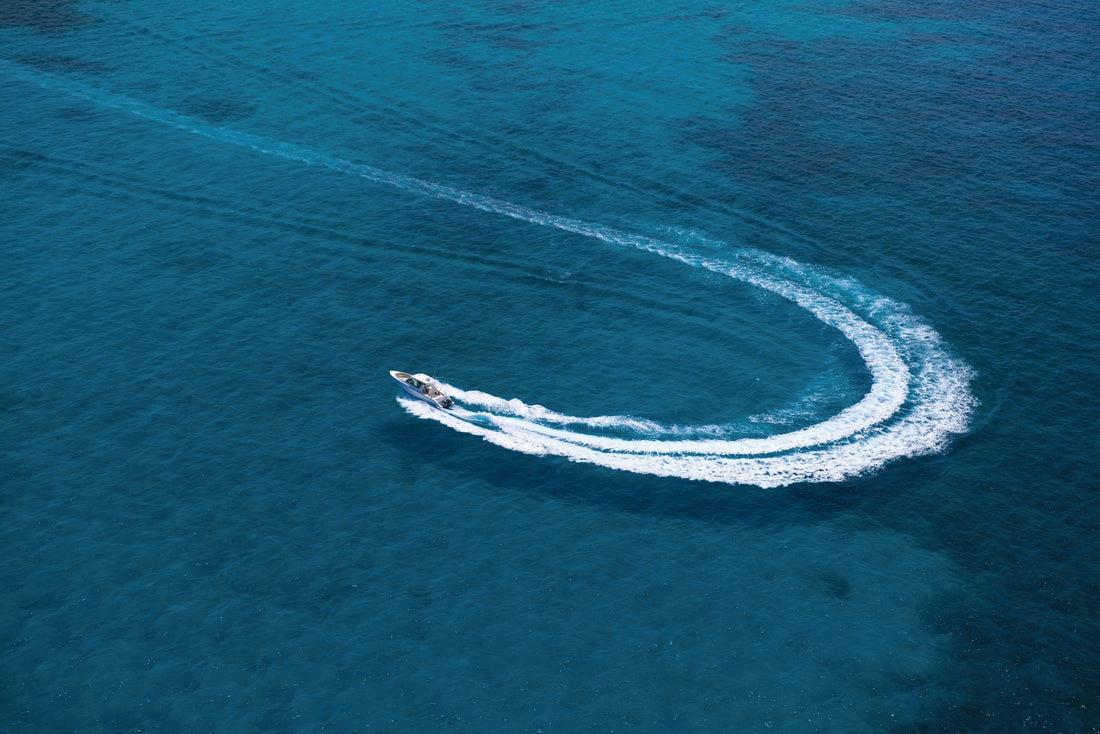



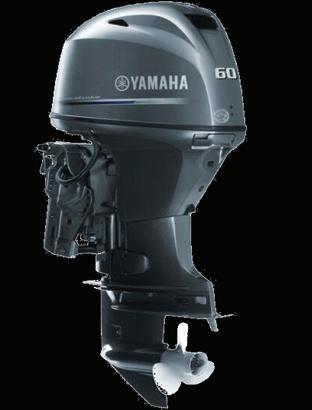










It’s no fsh tale when you run with a John Deere. You can get everything done faster and easier, so you get more time on the water. Plus, our special offers make them the catch of the day.





Arecord-breaking 126-day Gulf red snapper recreational season has been set for 2025, the longest season since Florida assumed management of Gulf red snapper. e expanded season includes additional summer and fall shing days from 2024, o ering anglers more opportunities to sh over major holidays such as Memorial Day, Independence Day, Veterans Day, and anksgiving.
“Florida is the shing capital of the world— with 4 million licensed anglers and generations of families who enjoy our waters. A er setting a record last year, we’re doing it again with the longest Gulf red snapper season in state history, giving Floridians and visitors even more time to
sh on Florida’s waterways, said Governor Ron DeSantis.
“ e Gulf recreational red snapper season is a highly anticipated and celebrated event for anglers nationwide, emphasizing Florida’s exemplary shing resources,” noted Florida Fish and Wildlife Conservation Commission Executive Director Roger Young. “ is record-long season results from the strong data collected through the State Reef Fish Survey, which Governor DeSantis, the Florida Legislature, and our recreational anglers have consistently supported.”
e 2025 Gulf red snapper season is open to those shing from private recreational vessels or charter vessels. e summer season began over

Memorial Day Weekend, and reopens June 1 through July 31. e fall season will include the following dates:
• September 1 –14
• September 19 – 21
• September 26 – 28
• October 3 –5
• October 10 – 12
• October 17 – 19
• October 24 – 26
• October 31 – November 2
• November 7 – 9, 11 (Veterans Day)
• November 14 – 16,
• November 21 – 23
• November 27–30 ( anksgiving weekend)
• December 5 – 7
• December 12 –14
• December 19 – 21
• December 25 – 28 (Christmas weekend)
Florida’s ability to o er this extended season is made possible by the data-driven management approach of the Florida’s State Reef Fish Survey (SRFS).
In the event of weather-related closures impacting the shing days, Florida will evaluate the option to add additional Gulf red snapper dates later in the year.
Anyone shing for red snapper from a private recreational vessel—in state or federal waters— must be registered as a State Reef Fish Angler (with annual renewal), even if exempt from shing license requirements. Registration is available at GoOutdoorsFlorida.com.
For more on recreational snapper regulations, visit MyFWC.com/Marine.


What are the best parts of June? School’s out, the days are long, and I get to hit the water more o en with my boys. It’s become a tradition in our family: pack the cooler, grab the rods, and head out chasing tails under the summer sun. Our not-so-secret weapon? e always-reliable popping cork.
Now, I won’t try to name every cork on the market (we’d be here till next June), but I’ll share our go-to setup and a few tips to help make your next trip smoother—especially if you’ve got little anglers in tow.
Let’s talk bait. Live shrimp is our MVP, but dead bait and lures get their time to shine too. Lures tend to keep the “bait bandits” away, but if it’s a slow bite, those pesky nibblers become the stars of the show. My kids think a croaker on the line is just as thrilling as a red sh.
We o en dri or anchor near structure when there’s bait ickering around. Dri ing can be tricky with kids who haven’t mastered the long cast or slack control. Two tricks help here. First: the circle hook. It sets itself (less work for little hands) and does minimal damage if you need to release your catch. Plus, in the chaos of a dri ing boat, it’s more forgiving when someone forgets to keep tension on the line.
Second: skip the loop knot for your cork and
hook. Loop knots are excellent—just not here. ey add slack where you don’t need it, and with junior anglers on deck, less slack means fewer tangles and missed sh.
Now to the main event: the cork itself. A er decades of experimenting, I’ve fallen for a newer model—a hard plastic, deep-cup, rattling, popping cork. It’s heavy enough for my boys to cast like champs, even into a headwind. No wires, no wind tangle nightmares, and it ies like a bullet. e built-in rattles add the right commotion to call sh in without scaring them o . And that deep cup? It creates that irresistible slurp-splash sound with almost no e ort. Perfect for young anglers still guring out the rhythm.
One last tip—transport like a pro. Most folks clip the hook low and let the cork bounce up top, opping around and waiting to poke someone. I reverse it: secure the cork down by the reel, wrap the leader around the handle, and clip the hook up high. No ex, no loose hooks, no surprise piercings.
So grab a few snacks, load up the boat, and hit the water. June’s waiting—and the popping cork’s ready to work its magic.
Capt. Michael Okruhlik is the inventor of Knockin Tail Lures®, and the owner of www.MyCoastOutdoors.com.
By Capt. Michael Okruhlik
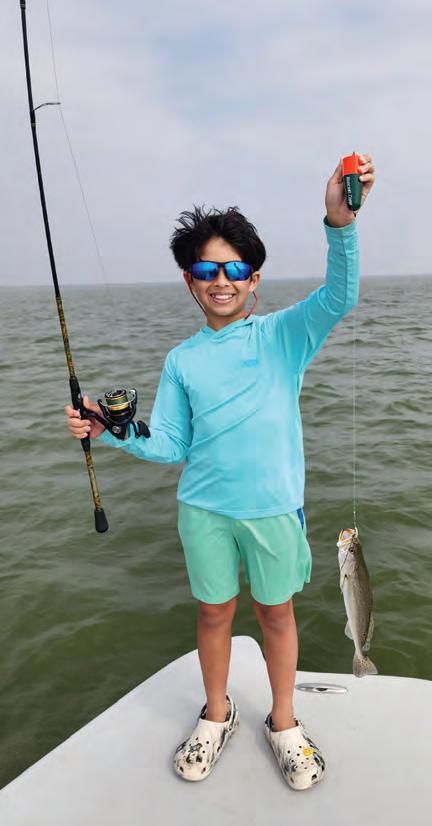
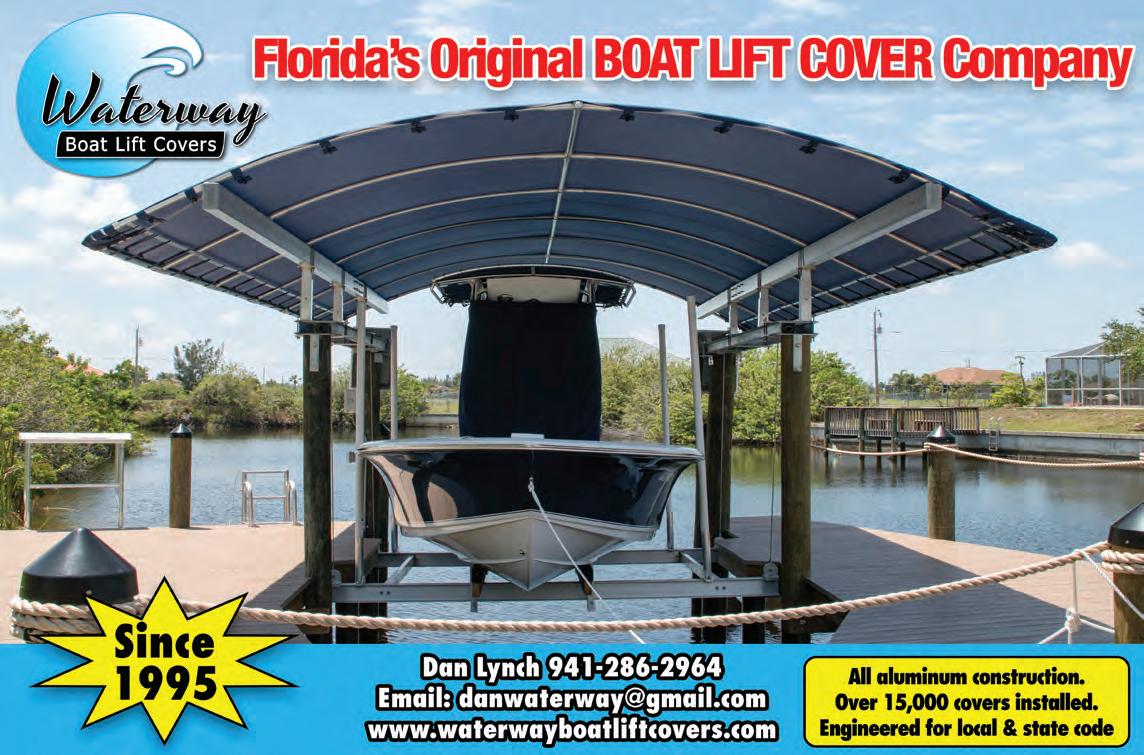


By Mark Ambert
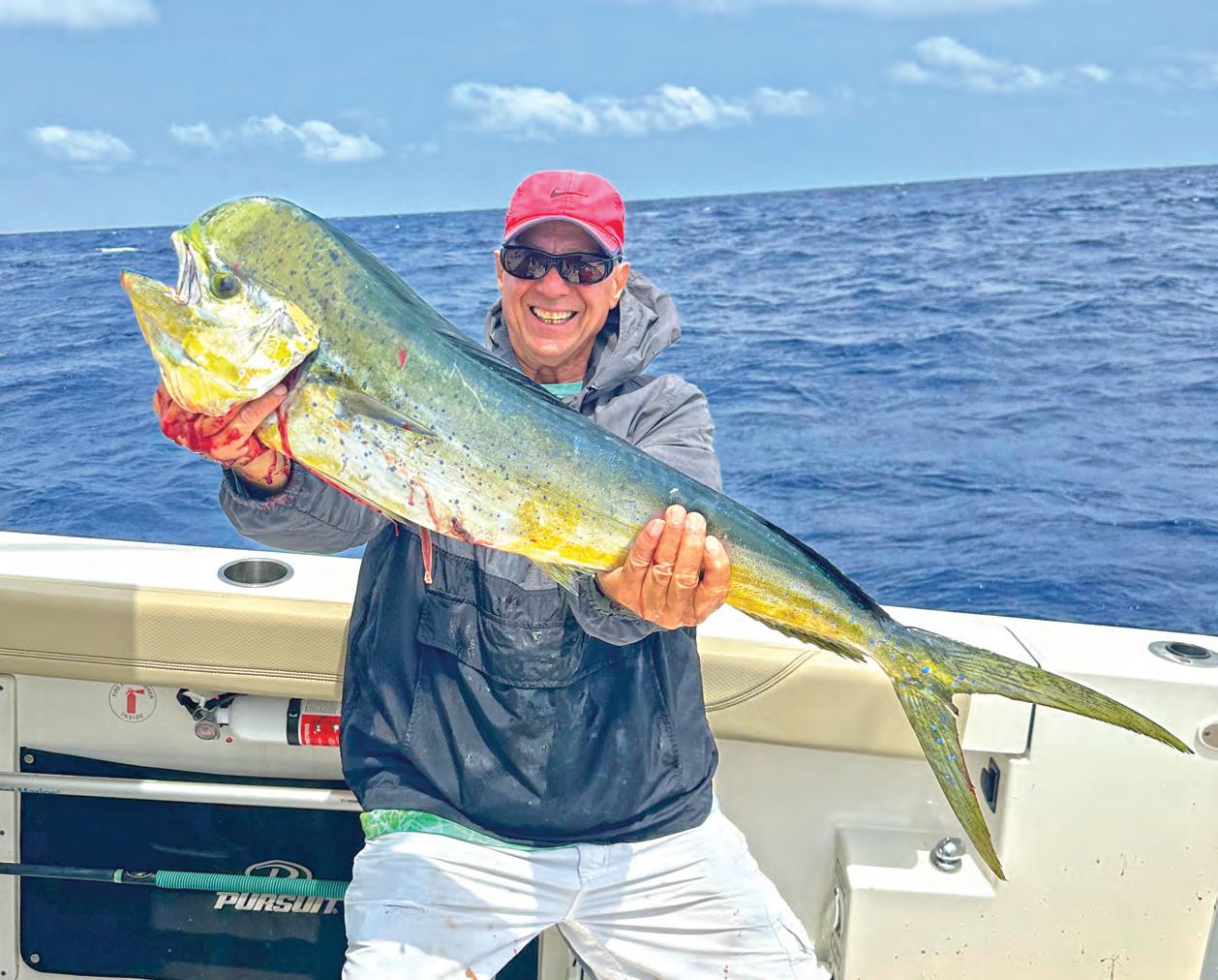
Floridians’ favorite time of year is finally here. The mahi season has begun with schoolies showing up in numbers I’ve not seen in the prior few years. All signs are pointing to a good summer ahead! To be better prepared let’s go over some interesting fundamentals regarding mahi behavior and their preferred environmental conditions.
Mahi are generally year-round residents anywhere surface water temperatures remain at or above 78 Fahrenheit.
As seasonal warm water flows north and south the mahi follow the flow (78 to 82 degrees) extending their distribution north and south as local waters warm.
Mahi can spawn year-round in warmer areas like the Florida Straits with peak periods in January, February, and March.
Off the Florida Keys, feeding schools are common in May as the young fish begin their migration northward along Florida’s east coast.
When in adult schools mahi usually run from 8 to 20 pounds with size increasing from early to late summer.
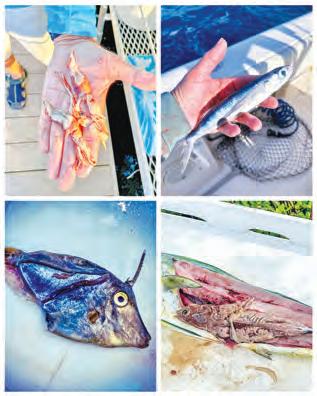
These schools are most often seen in the Western Atlantic along the east coast of Florida from the Florida Keys to the Carolinas in mid-to-late summer.
Mahi have a particular attraction to things found on or near the surface including most floating objects, sea turtles, porpoise, and patches of seaweed. When the water is clear, these objects are very visible from the surface to 100 feet where mahi spend most of their time feeding regardless of the overall depth.
Most anglers focus their efforts on weed lines. There are many times of the year when mahi do not come to the weed lines but are chasing bait in open water.
Mahi respond to the most abundant food source. When flying fish or other baitfish are abundant, you will find schools of mahi chasing them.
When deciding where to fish for mahi, review and interpret fishing conditions on a day-to-day basis, considering the time of year, moon phase, weather conditions, wind direction, tides, currents, and the position of the Gulf Stream. This will help to locate schools of feeding fish.
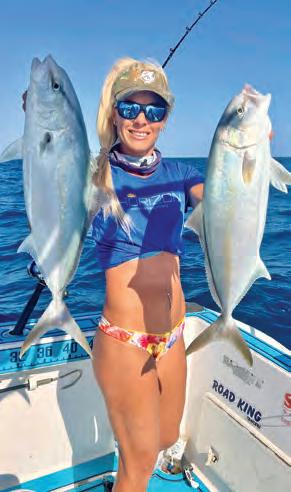
Please be sure to check out my YouTube Channel “Darcizzle Offshore” for fishing videos every week! www.youtube.com/DarcizzleOffshore
Boca Raton, Lake Boca Raton,






























ith summer on our minds, it is hard to believe we are halfway thru 2025! The water temperatures will be gradually rising another two degrees to an average of 82.6⁰F. During this month, wind speeds should become fairly consistent with calm to moderate easterly breezes the majority of the time. Anglers, please be sure to take heed of Mother Nature and pay attention to afternoon thunderstorms this time of year. Late afternoon thunderstorms build and creep up on you quickly. I would suggest getting an early start if you decide to head far offshore to find mahi mahi. If you are the first to find an offshore weedline it can make a huge difference as to what lands in your fish box at the end of the day.
Bottom dwellers such as groupers, yellowtails, mangroves, and muttons will continue to be plentiful. Blackfin tuna ranging from 20-30 pounds are in our area too, confirmed by numerous local fishing reports- everyone is catching jumbo blackfin! Sailfish are also a likely catch, which are still around in smaller resident numbers. Bonito, aka false albacore, will make a grand appearance this month and will be thick in numbers around the reef in 80 to 150 feet of water all the way from Boynton Beach to the Juno ledges. This is a great fish to fight on light tackle. They are loads of fun for the kids to catch and provide great excitement for a family outing offshore. I use my bonito for chunk bait, and I make homemade bonito strips for planer fishing.
Throughout the month of June, we should continue to have a substantial and constant bite offshore. The dolphin bite should continue to be red hot during the month from Boca Raton, Palm Beach, and Jupiter. If you’re on the hunt for that elusive, hefty bull dolphin; here is a MUST-read tip for you! Birds are an important factor when you’re offshore, a majority of the time they are over bait, debris, and pelagics. Lone frigates are often found following sizable pelagic fish that pushed bait fish to the surface. However, if the birds are facing into the direction of the current and hovering over a small area, they are over large dolphins. This is because larger dolphin face into the current preying on bait and small fish move with the stream. But, if the birds are circling and moving upstream with the current, they are over schoolies. Small dolphins feed and move with the current because they are not strong enough to fight the strong gulf stream. This method works very well and 9/10 times you will know what you’re dealing with before you get to them!









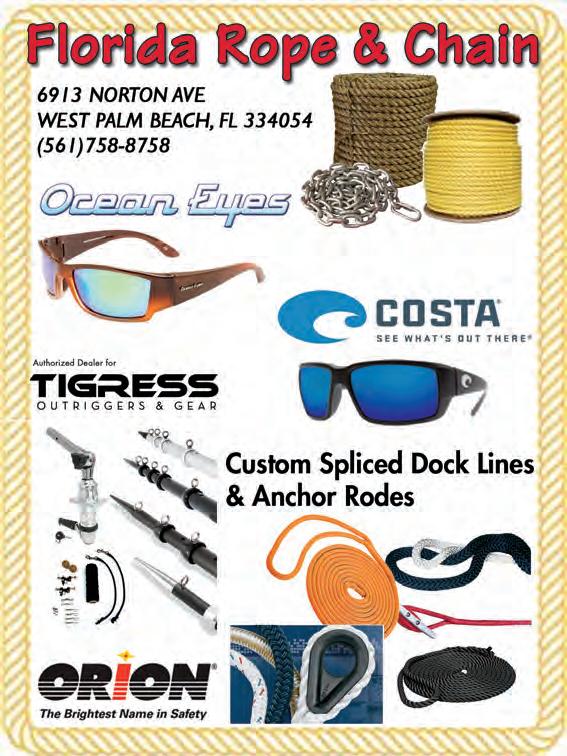
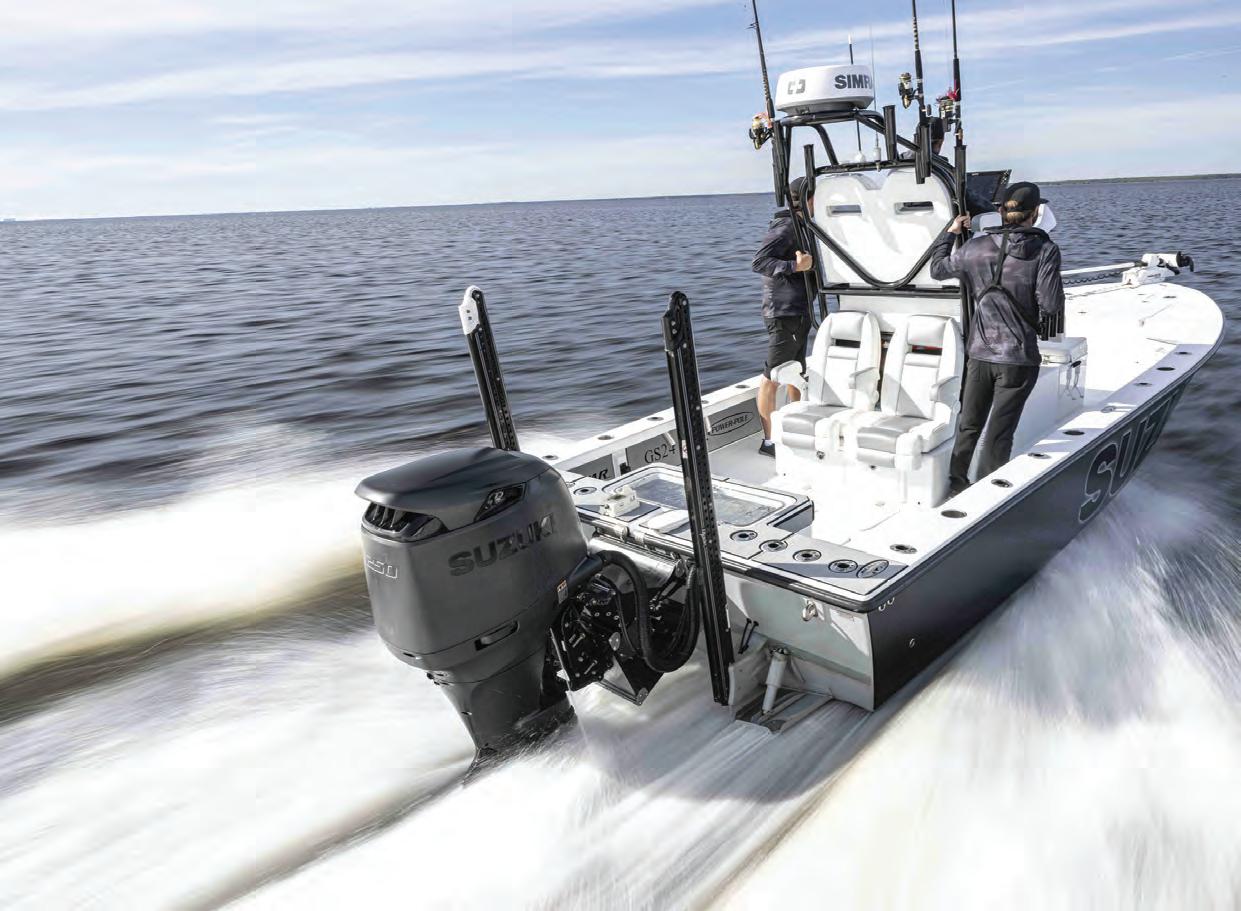






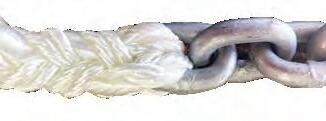


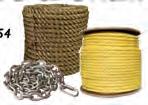




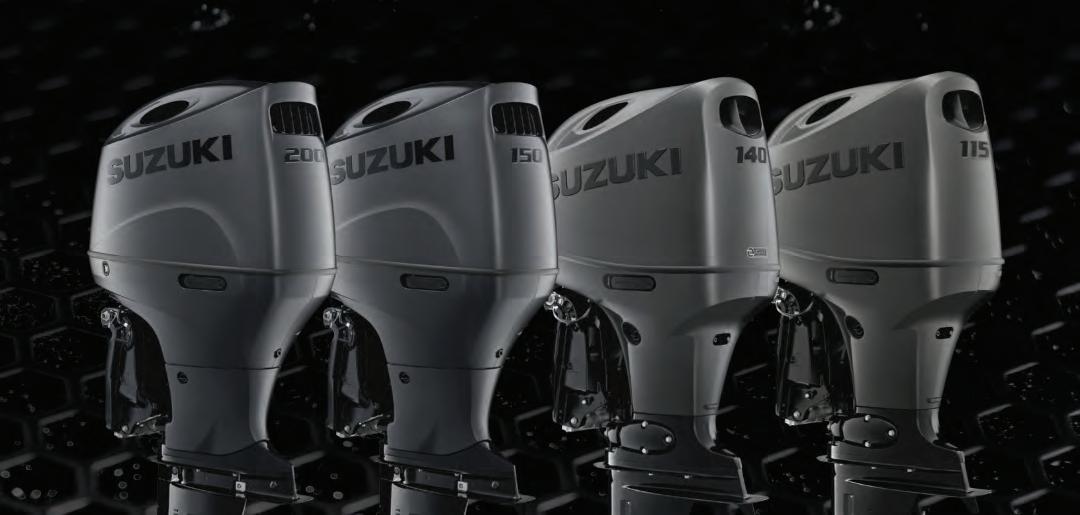


www.swamptosea.com • 561-503-0848
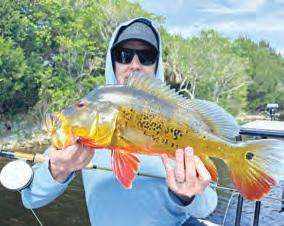
Everglades has been producing some really nice peacocks this year.
Here is your Palm Beach County inshore and freshwater forecast for June. The summertime nearshore species have arrived and it’s going to be a great time to catch some fish for the dinner table. Mahi, rainbow runners, and lots of other tasty species will be easy to find along with bonitas that are always more than willing to give you a great fight. Most of these species will be out off the edge but a little closer in. Over the 60’ reef you can expect to find kingfish, sailfish, muttons, and more. Catching or buying nice live pilchards is a great way to produce lots of action but not always necessary. For artificial, I recommend always keeping a popper tied on and a 5”+ jerk bait such as a Crystal Minnow. This is also the time of the year that a jig dropped deep will rarely get refused; so, if you like big battles with fish, it’s a great option. June is a perfect time to catch some big fish on the flyrod, where I usually work as a team with one guy tossing a hookless teaser plug on a spinner while the other makes casts to fish that are chasing. Eat Me flies and clousers are the main choice for me.

Inshore groupers make everyone happy.

Next, we head to the beach to look for tarpon and snook, moving slow and quiet is the key as these fish are very timid. If they get spooked the chances of scoring a bite drops significantly. A live pilchard with a nice long clear leader will give you the best odds of getting a bite.
In the freshwater, the Ida/ Osbourne Chain, the bite should be solid with plenty of clowns and peas in the mix. I like to fish artificial and flies, but the truth is those local urban fish seem to be spoiled on live bait, so you just have to work a little harder and be more specific on the lures you use. Another good option is to use a kayak, canoe, or even just walk to the banks of smaller canals in town that the charter boats can’t get to, you will learn quick that all the fish there are a lot more cooperative.
Good luck out there!
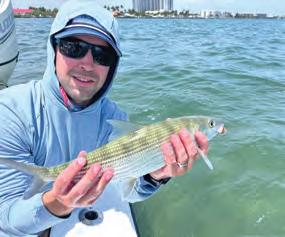
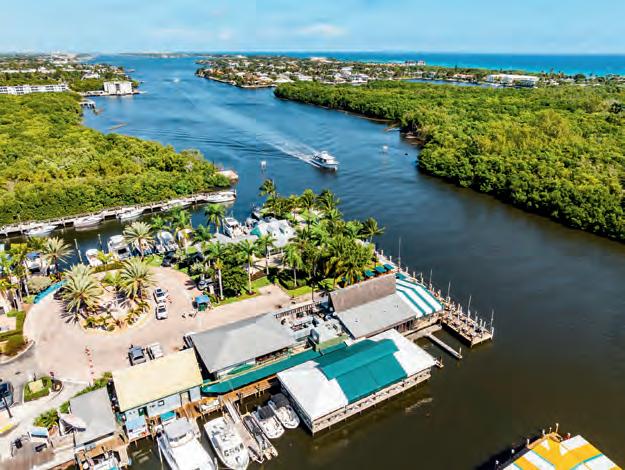






































JUNE 20TH - JUNE 22ND

The West Palm Beach Summer Boat Show returns to the South Florida Fairgrounds featuring over 100,000 square feet of new boats and accessories. There are center consoles, bay boats, flats boats, runabouts, pontoons, and more. Accessories include boat lifts, outboard engines, outdoor furniture, and more. Trades are accepted and financing onsite. There is also a preowned boat section. Admission is $10, kids and parking are free. June 20-22, 2025. Friday 12-6, Saturday 10-6, Sunday 11-5
www.southflaboatshow.com
For more info, please contact Jackielou, Show Manager, at 772-486-4969.
CONTINUED FROM PAGE 1 MAHI >>
Mahi are one of the fastest growing fish in the sea. They can grow an average of 1½ to 2½ inches a week! An active food source is the primary motivator and their preferred food source changes as they grow. Juveniles feed mainly on crustaceans found in sargassum weed while adults feed up to 50 percent on flying fish and squid found in open water. The remainder of their diet is a variety of baitfish found under weed patches and debris.
Mahi by necessity become opportunistic feeders, when food gets scarce. Then they will come to the edge of the reef systems to feed on whatever bait is available. Stomach contents can give the angler a lot of information on where the fish are feeding. Flying fish indicate surface feeding; squid-subsurface or nocturnal feeding, and small varied bait indicate weed patches. Thickness of a weed patch is an important factor as it vastly increases the number of baitfish, shrimp, and crabs this floating ecosystem will hold.
In general, mahi prefer southeasterly winds as this helps congregate weeds into distinct lines or patches.
Generally, when mahi fishing, keep several spinning outfits rigged and ready. My spin tackle features a popper, a bucktail, and several bait hooks sized 4/0 thru 7/0 ready to go. Baits include live goggle eyes (for larger mahi), squid, ballyhoo chunks, and local live baits such as pilchards and sardines.
There is so much to know and learn about this amazing angler’s quarry. Spend the time to increase your knowledge base and you will be rewarded!
Mark Ambert, IG @marksgonefishing_™ marksgonefishing25@gmail.com_


Capt. Weston Russell • www.reelintensefishing.com •561-310-2690
Welcome to the Coastal Angler Magazine fishing report for the waters off Palm Beach Inlet. Expect “Reel Intense” fishing for the month of June.
For the inshore anglers… Snook: Strong bite around mangroves, bridges, and inlets, especially during outgoing tides. Use live pilchards, shrimp, or topwater lures in low-light.
Tarpon: Migrating tarpon are showing up along beaches and in inlets. Live crabs and threadfin herring are top baits, especially around dusk and dawn.
Nearshore anglers… King mackerel: Excellent action around reefs and wrecks. Trolling with live bait or red spoons in 50-90 feet of water is effective.
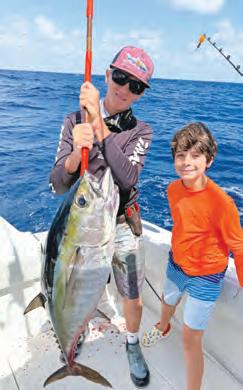
Cobia: Found following bull sharks and near structure. Sight fishing with jigs or live pinfish works well. Try chumming them to the boat.
Mutton snapper: These fish will be lurking under the king schools. Long leader with a fresh sardine will get it done.
Offshore anglers… Mahi mahi (dolphin):
Active under floating debris and weed lines in 300-600 feet of water. Trolling ballyhoo with skirts or using live bait near flotsam yields great results.
Sailfish: Consistent bite in 120-200 feet of water. Kite fishing with goggle-eyes or scale baits is productive.
Blackfin tuna: Found around deeper wrecks and during early mornings. Vertical jigs and live pilchards work best. Go deep with the baits!
These will be the conditions for the month of June.
Water Temps: 76-80°F
Tides: Strong outgoing tides are producing the best bites.
Weather: Light southeast winds, clear skies, and moderate seas offshore.
Tight lines and stay safe out on the water!
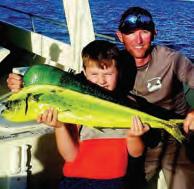
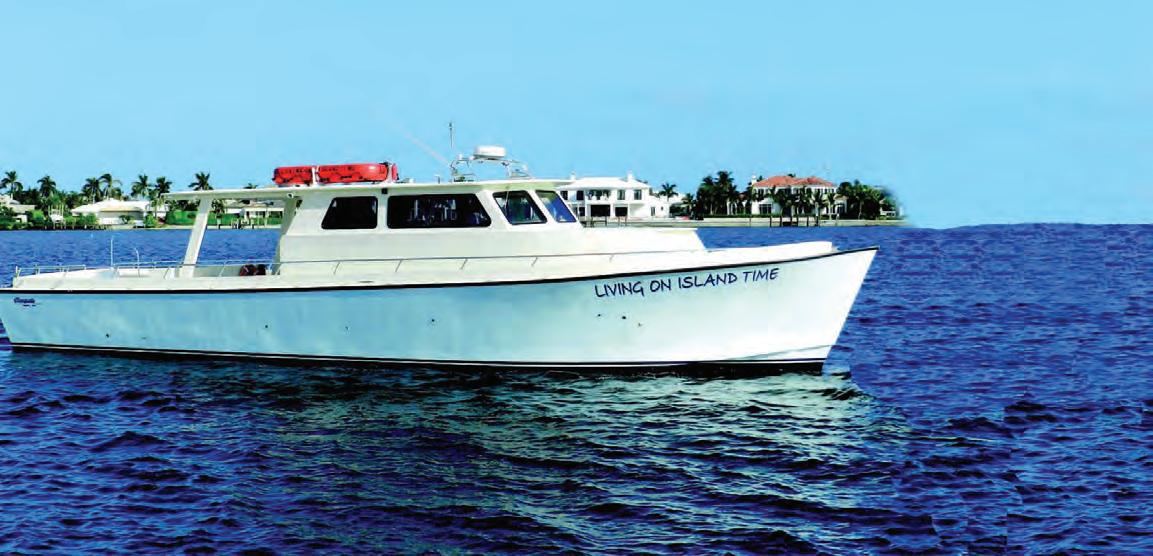





























• www.aquaadventuretours.com
Hello everyone and welcome to the start of summer! Earlier this year, I wrote a column on a bit of maritime history that had passed through our area, the SS United States. After rusting away in shipyards for more than 50 years, the once-sleek passenger ship was towed along the east coast of the US toward yet another shipyard, this time in Mobile, Alabama. The ship is still there, being prepared for its final role as the world’s largest artificial reef, just offshore of Florida’s Gulf Coast.

Generally speaking, a sinking ship is not a good thing. And for the most part, we boat owners do a pretty good job keeping our own boats afloat. But in the case of the SS United States and many other vessels that are just too far gone to save, becoming an artificial reef can actually be a very good thing.

Public Service Announcement: please note, I am not recommending that you help your buddy go sink his old project boat to clean up his yard.
That is called littering, or more accurately, scuttling. And it’s awfully illegal unless you have all sorts of pre-approvals from a wide variety of stakeholder agencies. Please, don’t try it on your own. You’re likely to cause way more problems than you might think you’re solving.
Case in point: ever heard of Osborne Reef in Broward County? Originally consisting of a series of concrete jacks arranged in a circle, in the 1970s Broward County tried to expand the reef’s footprint and habitat by tying together 2 million rubber tires with nylon and steel and then dropping them into the ocean.
With the best of intentions, they certainly expanded the reef’s footprint. But nylon and steel aren’t exactly known for great longevity in saltwater.
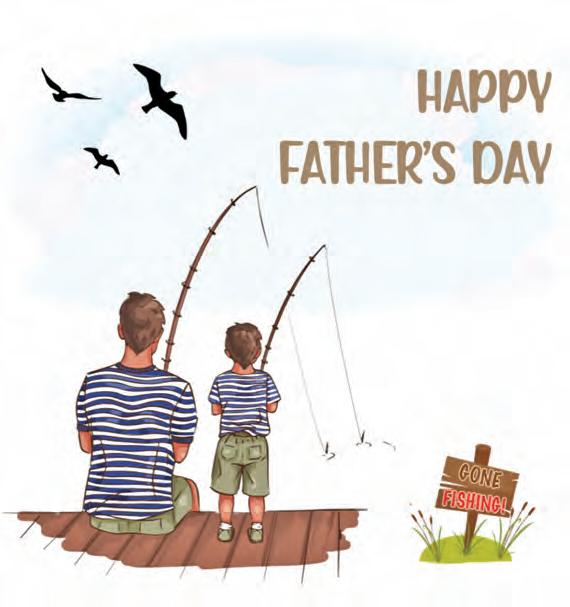

So, when the ties failed, 2 million individual tires started scooting about underwater, scouring the ocean floor, destroying natural reefs, migrating huge distances, and generally causing a local ecological disaster. The cleanup continues even today.
It takes a lot of planning and preparation to create a successful artificial reef. Whether using scuttled vessels, construction/ demolition debris, or even specially designed reef modules, it is work that is best left to the pros.
Florida has more artificial reefs than any other US state, almost 4,500. Whether in shallow water or deep, inshore or offshore, the state and many localities literally have tons of experience devising, designing, and deploying artificial reefs.
Among other benefits, artificial reefs can help increase reef fish habitat, provide shoreline protection, create opportunities for oyster reef regeneration, improve water quality, and enhance recreational fishing and diving opportunities. It’s a win-win when done correctly!
If you’d like to learn more about our local artificial reefs, visit https://discover.pbc.gov/erm/ Pages/Reefs.aspx.
Hope to see you on the water!
Palm Beach, FL - Jun 2025
www.USHarbors.com

































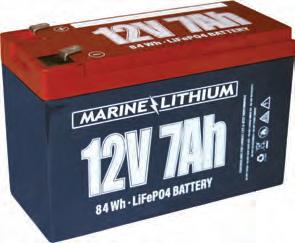





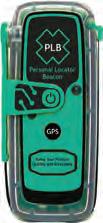

CAPT. CRAIG KORCZYNSKI
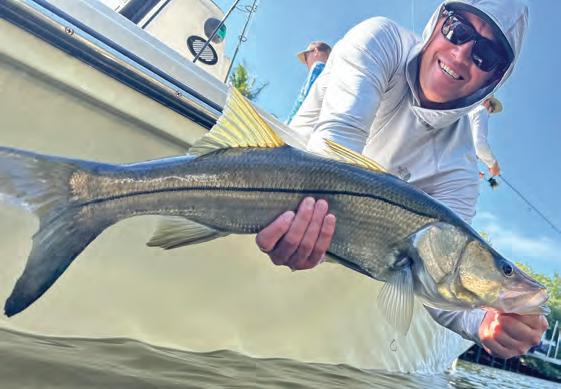
Summertime! June offers fantastic fishing near inlets, beaches, the Intracoastal, and spillways. These areas will offer a plethora of species to target.
The inlets and beaches are great areas to target snook as they begin to spawn. Live baits, Rapala X-Raps, and D.O.A. C.A.L. 4” Jerk Baits are all excellent choices for snook. D.O.A. Bait Busters are a great option for targeting snook along drop-offs and channels. Be sure to check the tides and

Sea Tow is happy to extend it’s service to include tows from Nothern Bahamas, Green Turtle, West End Marsh Harbour, Hope Town and Grand Cay to the U.S.
Whether you need a timely tow or help offshore, Sea Tow Captains are standing by 24/7.
Why wait? Join today and get 2 months free! (That’s a $28 value!) Use discount code: TCT.
Join Sea Tow Palm Beach \ 561-844-8056
seatow.com/palmbeach
locate good current for best areas to hook up with snook.
Anglers targeting tarpon can expect fantastic action along the beaches and inside the inlets. Tarpon can be seen rolling on the surface early in the morning as the sun is rising. D.O.A. Bait Busters and D.O.A. TerrorEyz, worked near the bottom, will get the silver kings chewing. Be sure to work in front of tarpon pods leading the fish as this helps not to spook the pod of tarpon. Do this and you will get your drag screaming!
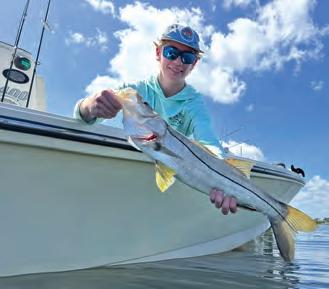

The docks, seawalls, and drop-offs will hold plenty of fish for anglers. Snook, tarpon, jacks, drum, and tripletail can all be targeted. For those fly anglers, this offers steady action as live chumming helps bring these predators boat side. Fly fishing is a blast and can be taught to novice anglers, whether it’s a 1-pound jack or a 20-pound tarpon, all types of anglers can experience the thrill of fly fishing.
Well, that is the June fishing report, hope you all enjoyed. Remember, you can’t catch them from the couch, so get out there and get hooked up. Tight Lines!
800-4-SEATOW































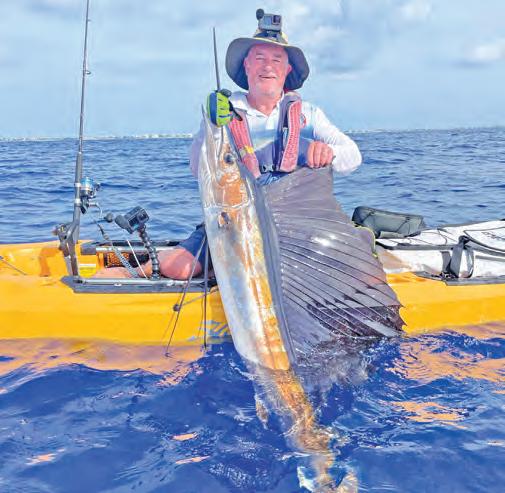
In June, snook, tarpon, and jacks will be looking for mullet pattern baits like Super Spooks, D.O.A. Bait Busters, and Jerk Baits. If you are finding mullet in the area you are fishing, whip out a Super Spook or large swim bait. If you are finding glass minnows, use a D.O.A. Jerk Bait or Shad Tail. Mangroves, docks, and seawalls with current nearby will be the places to target. Launching the kayak at places like Johnathan D. MacArthur State Park on Singer Island and Snook Islands in Lake Worth will give you access to some great areas to target snook, tarpon, and jacks. You should also still be able to find some tripletail in the rivers and lagoon. Focus your attention around floating objects and channel markers.


June is typically great for blackfin tuna. These fish can be taken on live bait as well as trolling plugs and dropping vertical jigs. During this time, mahi will also be in larger numbers and closer to shore. Large kingfish will be making their way to their spring/summer areas off of our coast. Trolling live goggle eyes, pilchards, and blue runners will put fish in the bag. Don’t be afraid to fish shallow during this time of year. Your range should be 60-180 feet of water.
Warmer weather means the clown knifefish will be more cooperative. Use shiners or shad along weed edges near deeper water. Peacock bass and largemouths will be heading towards their beds to spawn if they have not already. Look to sight fish the bass along the banks and docks. Throwing a small jig or D.O.A. Shrimp in their bed to annoy them will get them to bite.



South Florida Fishing Charters • (954) 440-5200 • sflfishingcharters.com
With the rainy season on the horizon and after such a crazy drought this year, I’m excited for the rain. Rain can have a huge impact on our fishery here in Florida. A good wet season in the Everglades means big bass! When water levels rise, all the exotic species in the Everglades spread out to spawn and hide. This is my favorite time to get out and chase largemouth bass using smaller presentations—without the usual cichlid by-catch. Right now, you can go anywhere from Tamiami Trail to Sawgrass Park and catch over 100 bass a day.

I don’t just love the rainy season for what it does in the Everglades, I also love what it brings to the city. Spillway fishing is one of my favorite pastimes. There’s nothing like getting off work and rushing to a flowing spillway. You never know what you’ll catch; big snook, tarpon, peacock bass, giant largemouth, and sometimes even big hybrid sunshine bass. These spillways are full of life and often produce trophy catches.
My go-to bait includes live mullet, gizzard shad, bluegill, or Mayan cichlids. Just be sure to check all the regulations regarding catching and transporting live bait. You can also fish these spillways and culvert pipes with artificial baits. Swimbaits and glide baits are best for bigger fish, but bucktail jigs and small paddle tails on jig heads work well too. Something weedless is a great option since there’s usually marine vegetation and floating natural debris, like palm fronds and sticks in the current. If I could only bring one bait to a spillway it would be the Z-Man Shadtron, its lifelike pattern is perfect for mimicking baitfish getting flushed through the canals.
Beyond boosting the Everglades bass bite and giving us great spillway opportunities, the rainy season also means prime snakehead fishing with topwater frogs. When it rains, small vertebrates, reptiles, and amphibians like worms, frogs, lizards, and snakes, move around and often end up in the water where the snakeheads are waiting to ambush them. These are all part of the snakehead’s diet, along with other fish. If you’ve been looking for explosive topwater action, drag-pulling fights, acrobatic jumps, and violent head shakes, snakeheads are where it’s at. They’re aggressive predatory fish and a blast to catch. The setup I recommend is a medium-heavy to heavy rod, 50–65 lb. braid, and a topwater frog. These fish are fun to catch from both the boat and shore.

As summer approaches, what can you expect from our lake systems? Warm weather means warm water, which fires up peacock bass, snakeheads, and clown knifefish. Peacock bass are usually my day-today target, and they thrive in this heat. While live shiners work best, my goto lure is a Shimano Zumverno 95SP Jerkbait. This time of year, peacocks hang around shallow cover like docks, clean banks, and sandy bottoms.

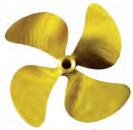
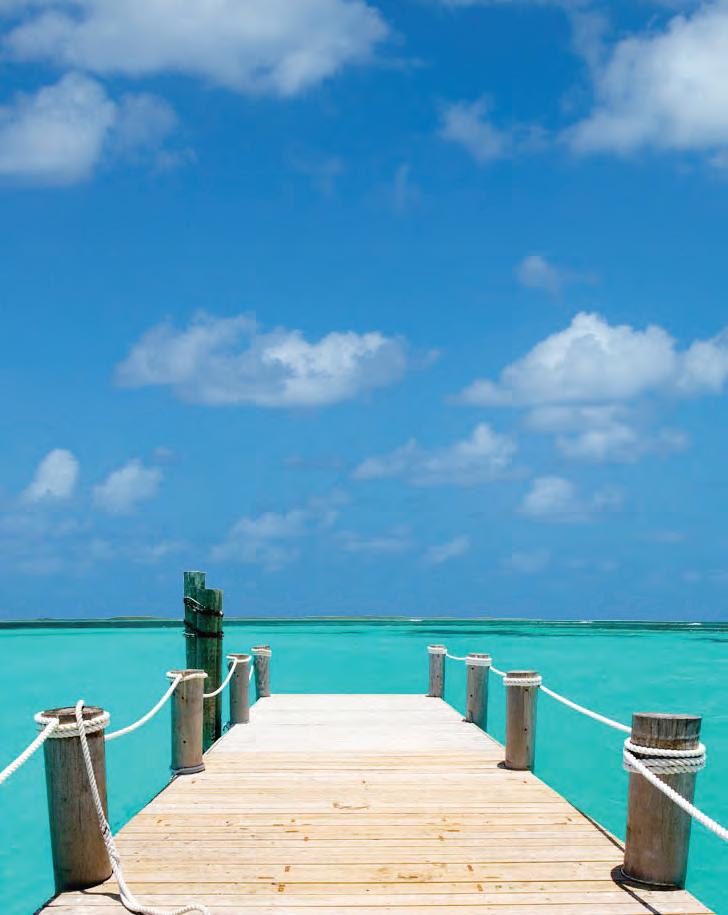






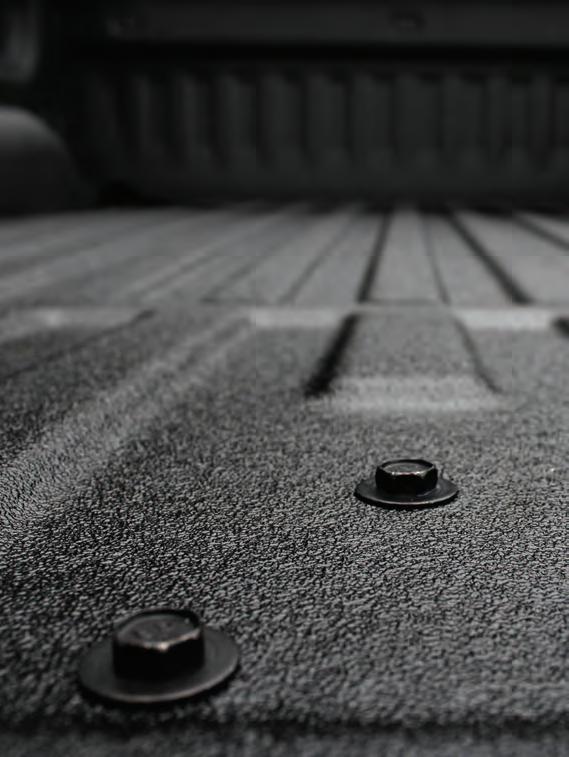



• Great Customer Service
• Unlimited Range Time
• Florida Concealed Weapons Classes
• FiReaRmS TRaininG CouRSeS Beginner to advanced & Private Classes Provided by Florida Firearms Training
• Fully air Conditioned Range
• maintained at 72 Degrees












5
8

























































By Brandon D. Shuler
Florida is known as the Fishing Capitol of the World, with MiamiDade County the hub of the Florida Atlantic coast with access to the Bahamas and the doorway to the Florida Keys. Miami-Dade’s waters host over 74,622 registered boats, not including rogue vessels and unregistered craft. With Miami-Dade County’s 34 cities and over 3-million residents, our surrounding waters of Biscayne Bay and the Miami River define our quality of life and supports an annual economy of over $64 billion a year, most of that on the backs of our water-based economies—recreational fishing, swimming, boating, and sailing.
As Florida’s population continues to grow at the rate of nearly 1000 new Floridians a day, we can only expect boating use to grow on our waters, and with it more chance for injury to both human and environmental resources.
To ensure that those enjoying our waters are safe, and the environmental treasures that are our greatest draw, Mayor Daniella Levine Cava has created the Boater Safety and Bay Education Task Force composed of members of the Lucy Fernandez and Monica Burguera Foundations, representatives from the Key Biscayne Community Foundation, the Office of State Attorney Katherine Fernandez Rundle, commercial and recreational boating industries, and members engaged in boater safety and bay education.
The task force is mandated to find recommendations that may include but should not be limited to boating safety issues in Miami-Dade County, education, and outreach efforts to increase safe recreation, coordination and communication between county, state, and municipal law enforcement, the future creation of a permanent county advisory board related to boating safety and bay education.
The task force is coming on the heels of the Florida Fish and Wildlife Conservation Commission’s 2023 Boating Accident Statistical Report which found 659 reportable boating accidents and 59 boating related

fatalities. Unfortunately, many of those incidents occurred within MiamiDade County and this increase in accidents and fatalities on our waterways has inspired numerous individuals to work for the promotion of greater boating safety and the prevention of future boating accidents.
The greatest impetus of the task force comes from the tireless efforts of Lucy Fernandez’s parents who lost their daughter in a 2022 Labor Day Boating accident on Biscayne waters. Her death inspired the creation founded the Lucy Fernandez Foundation.
“The Lucy Fernandez Foundation promotes boater safety and awareness,” said Andy Fernandez of the Lucy Fernandez Foundation. “Mayor Daniella Levine Cava’s Boater Safety Task Force is a unique opportunity to create meaningful change at the local level—and to help ensure safer waters for all to enjoy.”
Brandon D. Shuler is a former Texas Guide and water advocate. His work has appeared in Field & Stream, Outdoor Life, Saltwater Sportsman, and ˆShallow Water Angler. He authored Glory of the Silver King: The Gold Years of Tarpon Fishing Texas A&M University Press), and he is the executive director of the American Water Security Project.

June is here, and with it comes a fresh wave of summer fishing opportunities across South Florida. I recently had the pleasure of taking Dave McCoy and his grandson Mico Moyano on an unforgettable trip deep into Everglades National Park. We launched out of Flamingo for a full-day flats adventure.
We made a run about 30 miles into the backcountry, stopping at 8 different locations that had been producing. Their main goal was to catch trout, and we did just that. We landed a solid limit of healthy seatrout, plus a few bonus fish along the way.
What made this trip especially memorable was that it was Dave and Mico’s first time using artificial lures. We rigged up small swimbaits on 1/8 oz. jig heads and worked them low and slow across grassy flats, hugging the bottom. They picked it up quickly and were rewarded with steady action throughout the day. Mico even got himself a snook, and we tangled with a
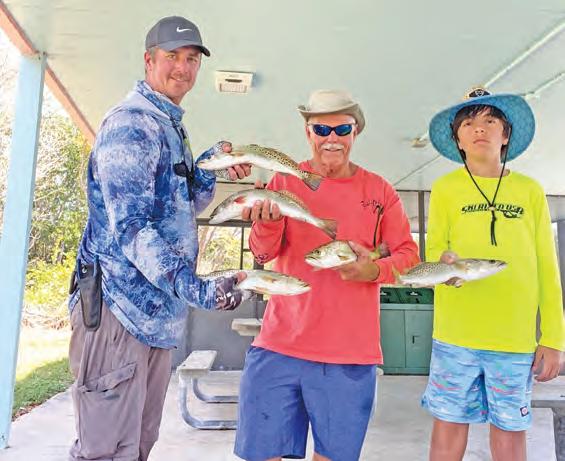
few jacks that brought some added excitement.
As if the fishing wasn’t enough, nature added to the show, where we had close encounters with porpoise cruising the flats, sharks patrolling nearby, and even spotted a couple of crocodiles basking near the banks. It was the kind of wild Everglades experience that makes every trip feel like a true adventure.
The morning conditions were calm and ideal, and between spots we shared stories and laughs that made the whole experience even better. The wind picked up a bit on the ride in, but it was nothing we couldn’t handle.
This trip was a great reminder of why I love what I do, introducing folks to new techniques, exploring wild places, and making memories in one of the most incredible fisheries in the world.
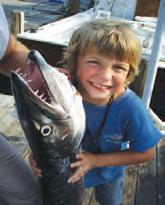

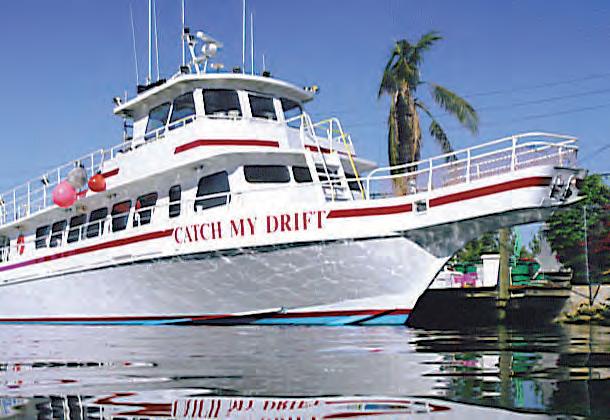


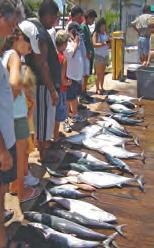

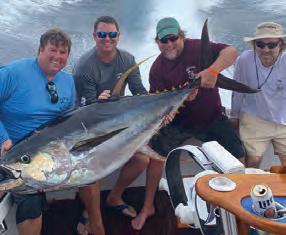

June marks one of the best times of the year for fishing in Southeast Florida. As the water temperatures rise, baitfish move in closer to shore, bringing with them a wide variety of hungry predators. Our sportfishing trips have been producing excellent results, targeting prized species such as mahi mahi, blackfin tuna, kingfish, grouper, and even massive game sharks that put up an unforgettable fight.
The action isn’t limited to the big game either—our drift boat trips continue to provide steady catches for anglers of all levels. These trips regularly hook into a mix of snapper species, grouper, porgies, grunts, kingfish, and a variety of other bycatch. With calm seas and warm summer days, June offers both prime fishing conditions and an enjoyable time on the water.
Whether you’re looking for high-adrenaline offshore action or laid-back bottom fishing, June is a fantastic month to get out and fish the rich waters of Southeast Florida. The bite is on, and our experienced crew is ready to help you land your next trophy catch and be there for you step by step.
Visit our website to book your next fishing excursion and get in on the action!





Dave Lawrence and the biggest Florida gar he has ever caught.

Brian Hall caught his personal best sailfish while fishing with Pushin Water Kayak Charters (Brian
After an hour fight across 6 miles, the sailfish was released to fight another day.



The very best hunting knives possess a perfect balance of form and function. They’re carefully constructed from fine materials, but also have that little something extra to connect the owner with nature. If you’re on the hunt for a knife that combines impeccable craftsmanship with a sense of wonder, the $79 Huntsman Blade is the trophy you’re looking for.
The blade is full tang, meaning it doesn’t stop at the handle but extends to the length of the grip for the ultimate in strength. The blade is made from 420 surgical steel, famed for its sharpness and its resistance to corrosion.
The handle is made from genuine natural bone, and features decorative wood spacers and a hand-carved motif of two overlapping feathers— a reminder for you to respect and connect with the natural world.
This fusion of substance and style can garner a high price tag out in the marketplace. In fact, we found full tang, stainless steel blades with bone handles in excess of $2,000. Well, that won’t cut it around here. We have mastered the hunt for the best deal, and in turn pass the spoils on to our customers.
But we don’t stop there. While supplies last, we’re including a pair of Stauer Flyboy Optics® Sunglasses— a $99 value —FREE with your purchase of the Huntsman Blade.
Your satisfaction is 100% guaranteed. Feel the knife in your hands, wear it on your hip, inspect the impeccable craftsmanship. If you don’t feel like we cut you a fair deal, send it back within 30 days for a complete refund of the item price.
Limited Reserves. A deal like this won’t last long. We have only 1120 Huntsman Blades for this ad only. Don’t let this beauty slip through your fingers. Call today!
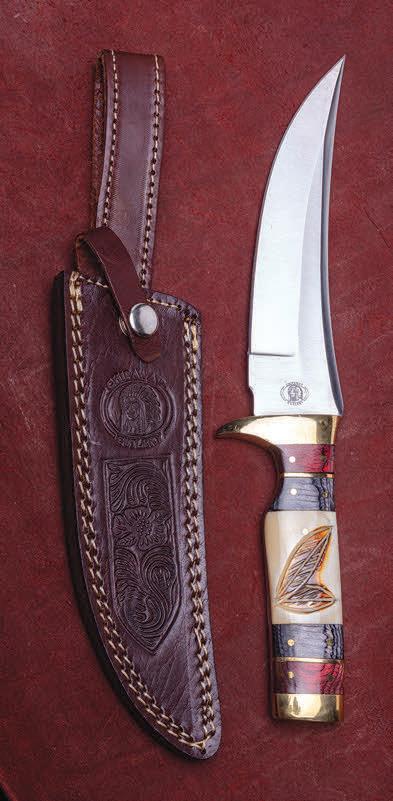



Flyboy Optics® Sunglasses a $99value


What Stauer Clients Are Saying About Our Knives
“This knife is beautiful!” — J., La Crescent, MN
“The feel of this knife is unbelievable...this is an incredibly fine instrument.”
— H., Arvada, CO


please call
Proposition 65 regulations before



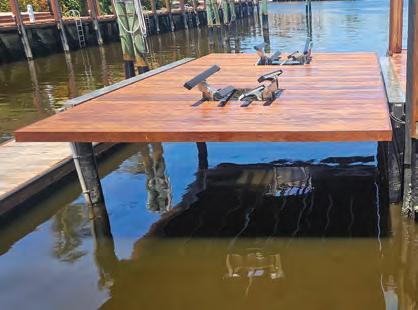



ShoreStation hydraulic boat lifts are a reliable choice for coastal residents and boating enthusiasts alike. Their strong construction, made with corrosion-resistant materials, allows them to withstand harsh environmental conditions, including sun, storms, and saltwater damage. ShoreStation provides a steadfast solution for protecting waterfront investments, o ering peace of mind to owners in the Sunshine State.
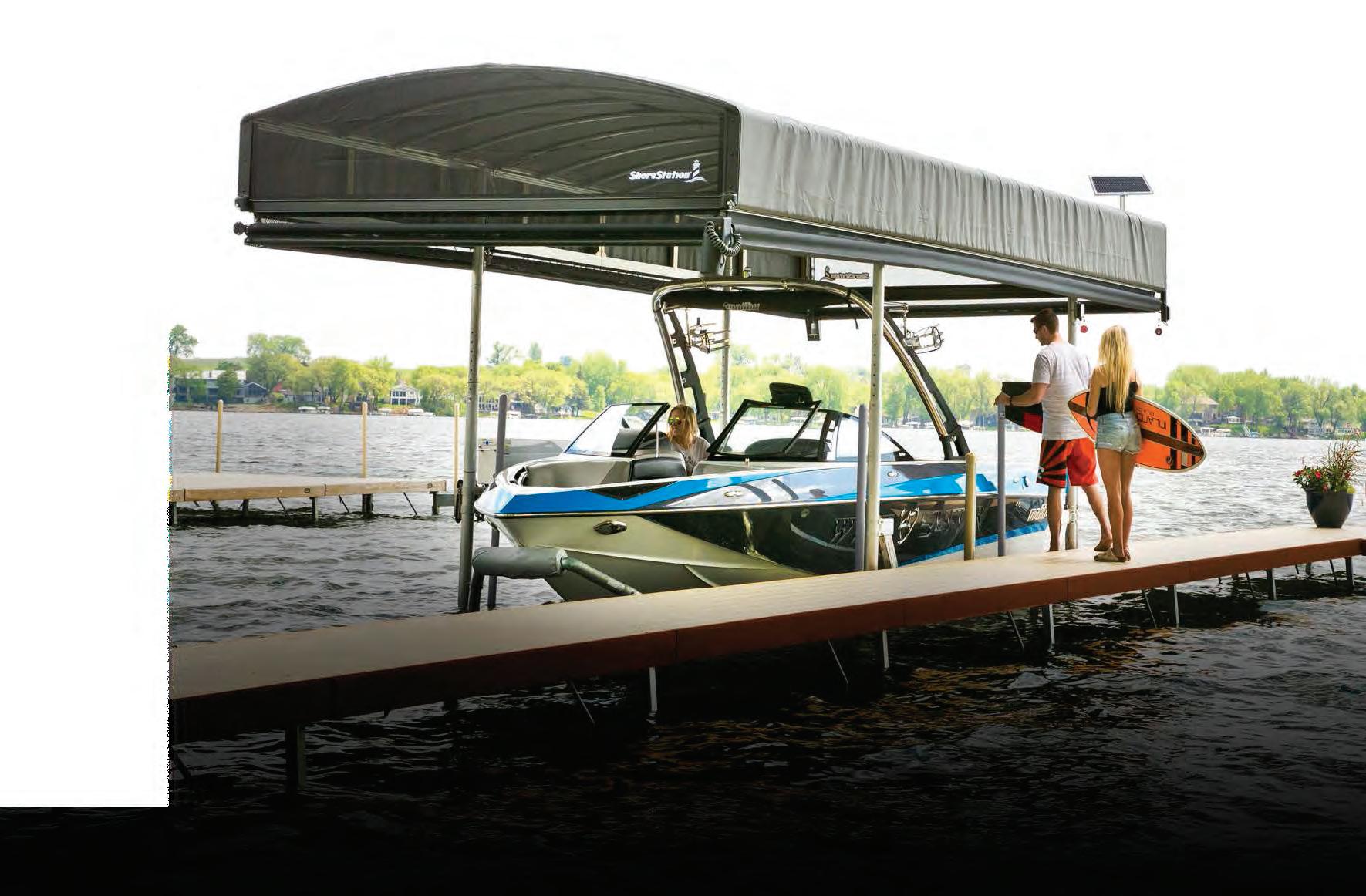

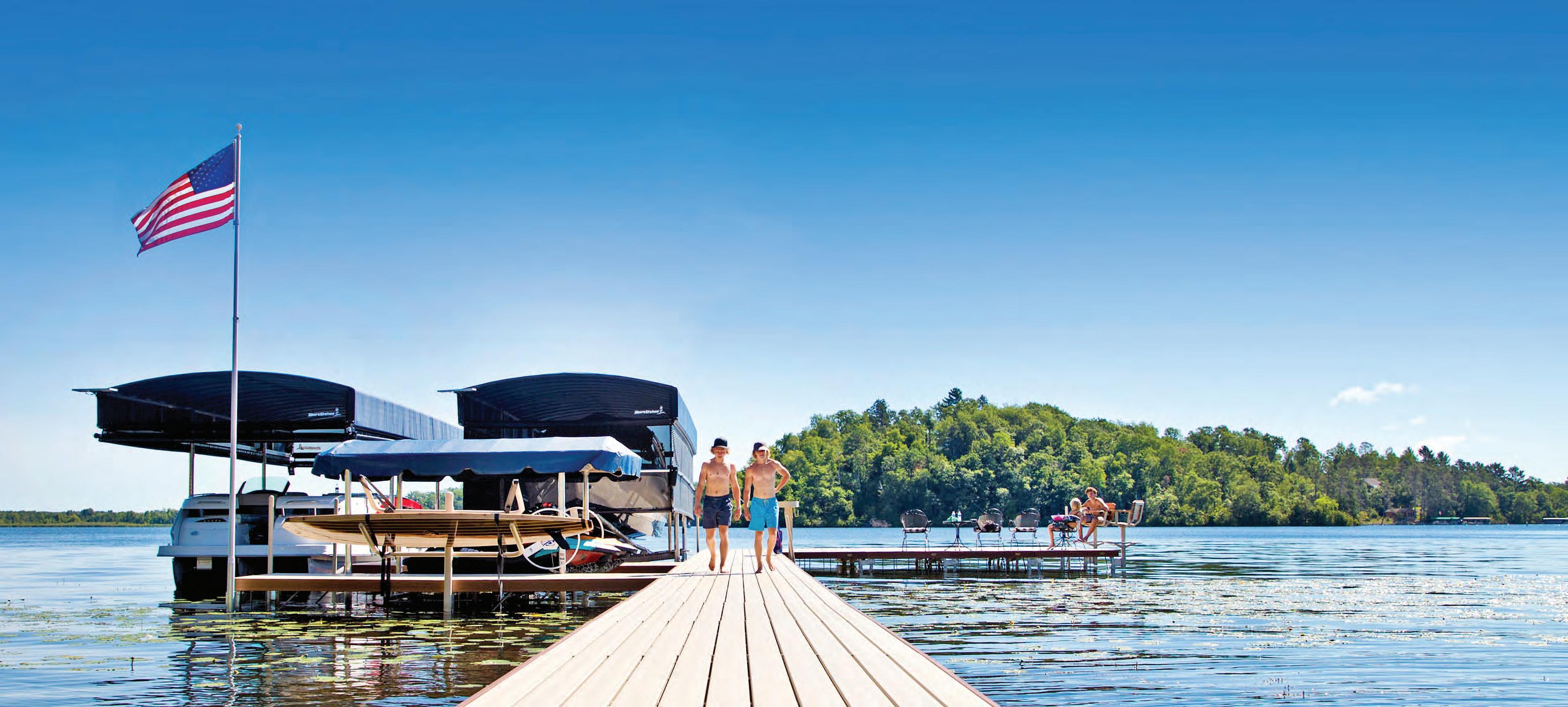



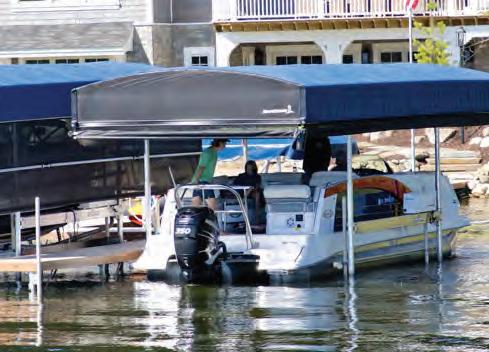
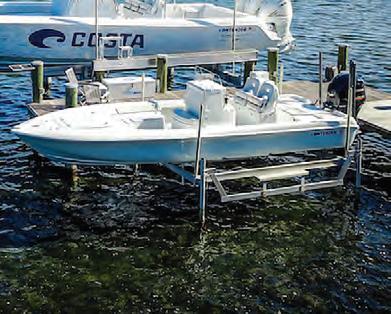
Equipped with exceptional weather resistant fabric and breathable SunTex 80 woven mesh ends for maximum protection and durability,

Made from the highest quality materials, our innovative hydraulic boat lift is one of the fastest and safest lifts on the market today. When you have a hydraulic lift, there’s no need to worry about wind and waves getting in your way. This lift will give you con dence to safely land and secure your boat in less-than-ideal conditions.
Never miss another moment on the water. Power your lift with clean, free solar power. Our speedy 20 watt charger features solar regulator drainage protection, saving your battery from permanent damage caused by overcharging.



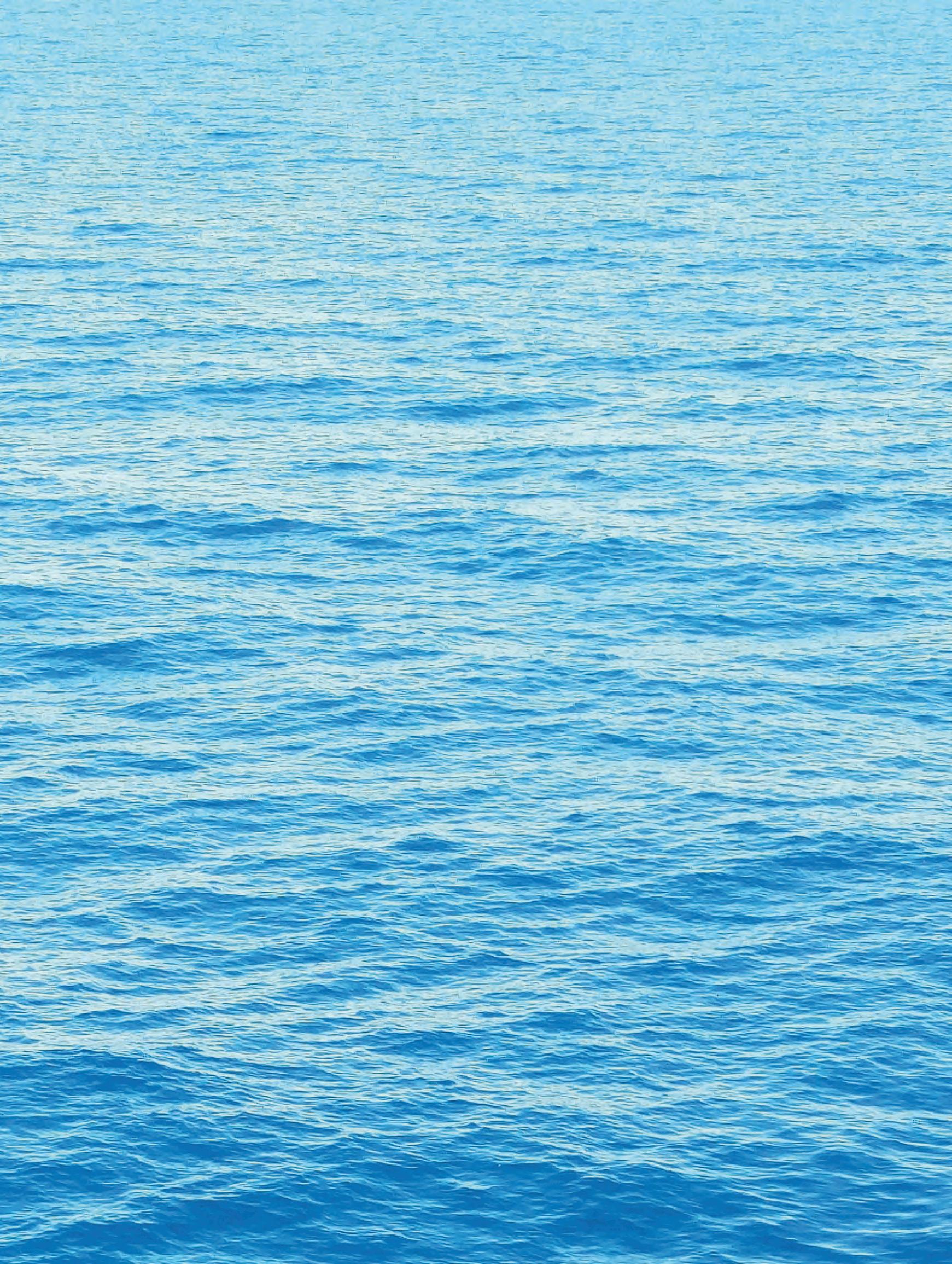


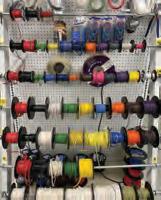








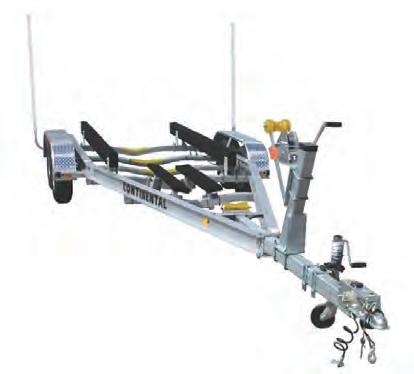
















Tim Barefoot
I’ve written quite a few articles on the tactics I used to catch grouper on the edge and inside the edge with bait in a decoy jig in the past, but now is a good time to push out a little further to see what’s up in the 350 to 500+ foot depth range. !is type shing may require you to change gears on your thought process and/or tackle, but you may be pleasantly surprised with the results.
First o , you will want to use a spinning rod with backbone and a lighter braided line. I’m not going to suggest any tackle manufacturer for rod, reel or line, but the line in the jig is the most important part of this equation. I know this sounds crazy, but you can get away with braid, a small is 20 pound test connected to a short 6-foot shot of uorocarbon leader, and catch the big boys from the deep. When you sh ledges, wrecks and rock homes, you have to use heavier tackle to coerse the grouper and big snapper out of the structure, but in the deep the sh tend to congregate around bait, and there is very little structure out there for them to get you in. !e bait out there consists primarily of squid—the universal bait for all the seven seas of this planet, period. Squid are present at all depths, from the surface at night to their migration back to the deep by day; just ask any sword sh. Ha!
!is deeper water shing may also require a change in electronics. In order to mark the sh and bait you need to have enough power to send the signal and

get a return. You can run all over creation trying to mark sh or bait in vast areas of water, but having the correct electronics will assist in this greatly. Once you start marking the blue-speckled screen on the bottom, you know you’re in squid. I’ve always said it, but when you nd the bait you found the sh. Once you mark the bait, more than likely, it will be squid and it’ll be time to drop in the correct jig.
I’ve made several videos using the 4 ounce (so plastic) Squid Jig, but I’ve also had a 6 oz. size made. A 10 inch mold cra ed squid, trimmed properly, can be very e ective at times. Fish like a champ on the 6 ounce headed down deep. !e jig stays perfectly horizontal and jumps like the 4 ounce, and everything down there sucks it up. I’ll be publishing videos soon on this.

I’ll close with this: nd the bait and you’ll nd the sh...using the correct electronics. Once you nd the bait/ sh, drop in the correct jig that imitates what they eat on a daily basis and you’ll get the bite. And one more very important note. Pay close attention to the MPAs, which are marine protected areas, and seasons you can sh in them. You need to be well informed of where you are when you nish shing and what you could put in the cooler. You have to play by the rules.
Check out Tim Barefoot’s YouTube channel and website, barefootcatsandtackle.com.


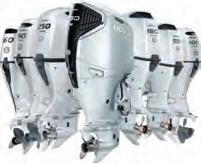
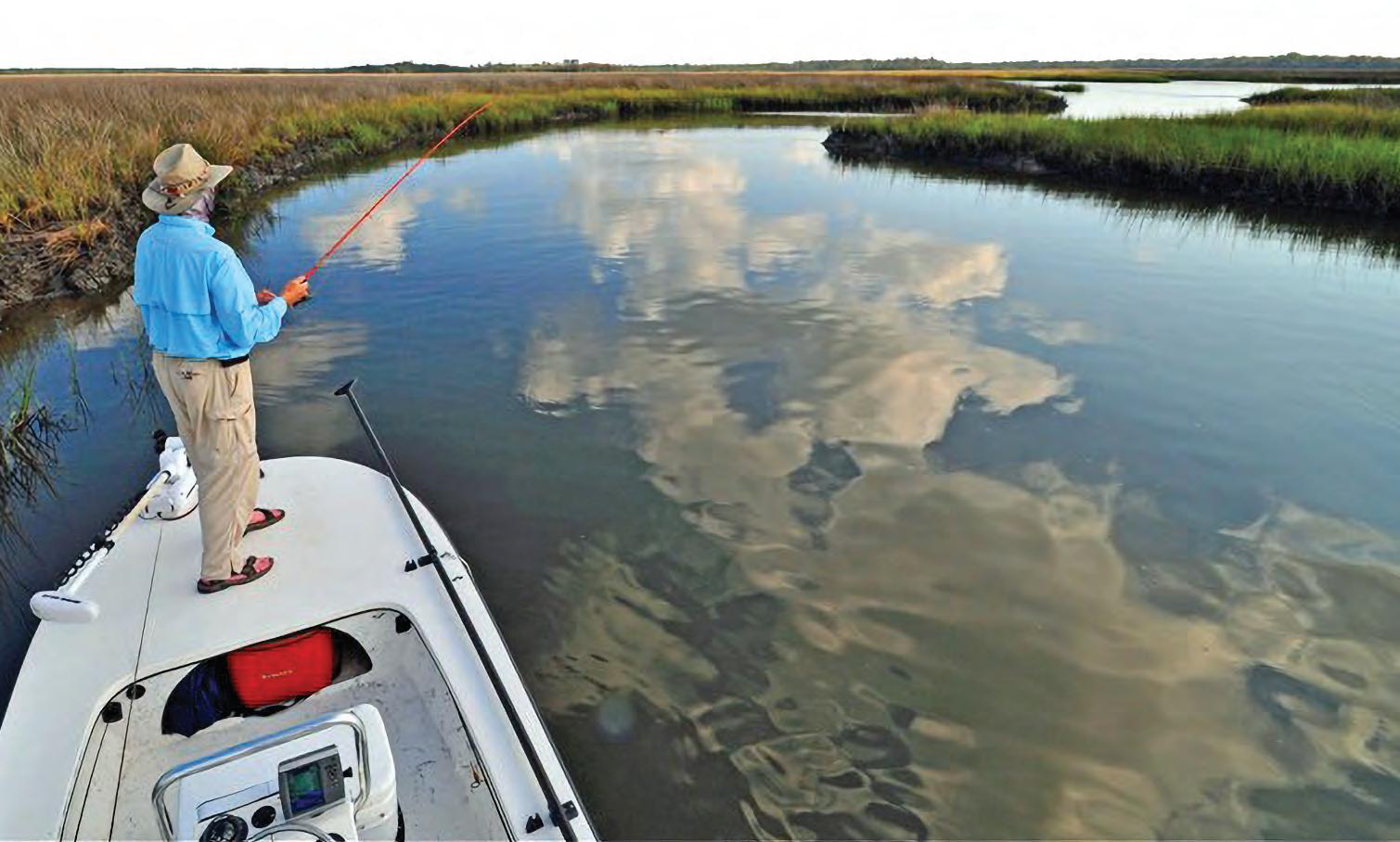

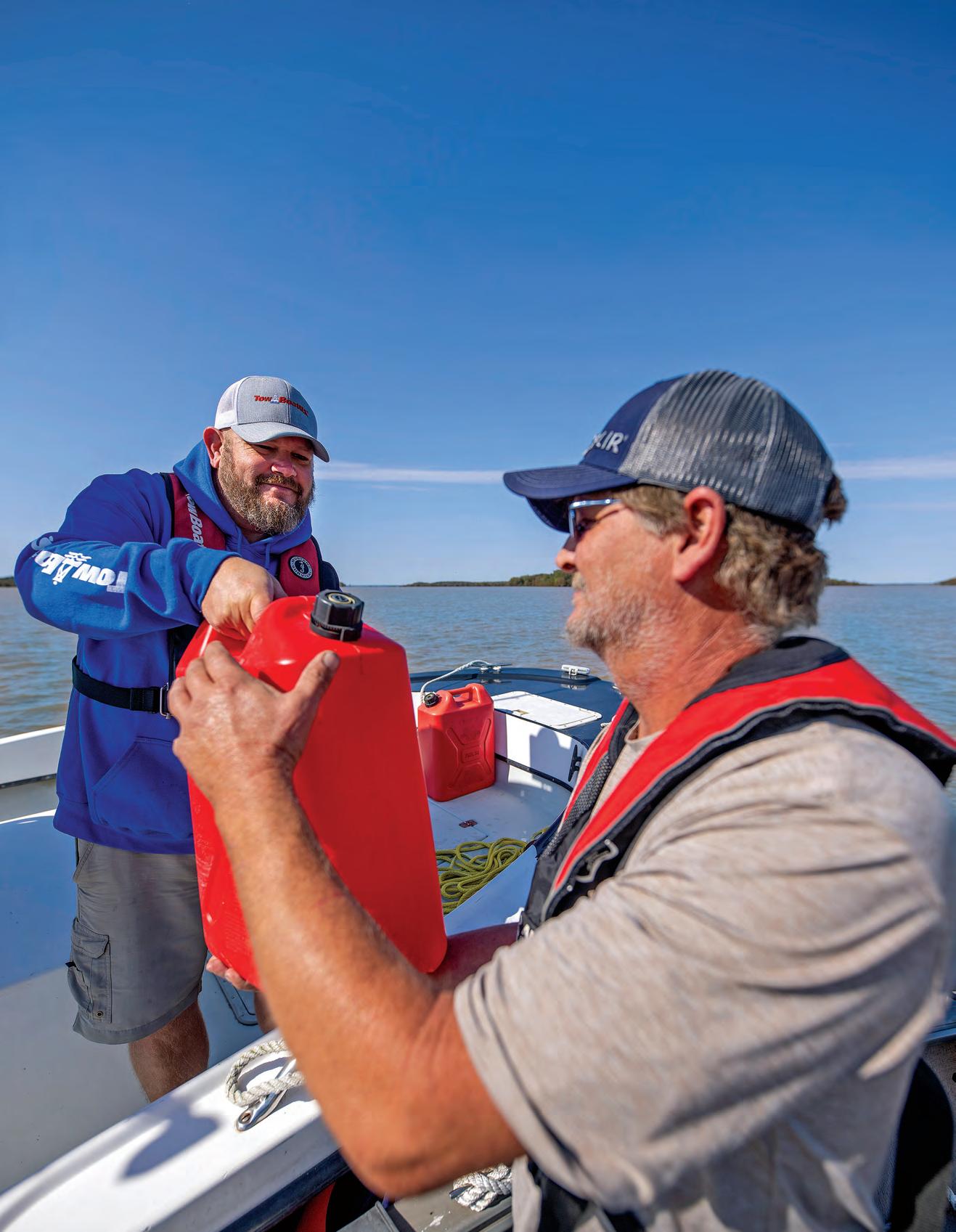



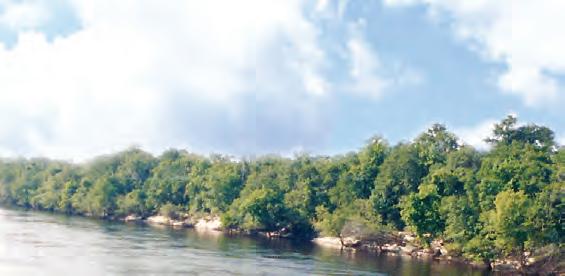
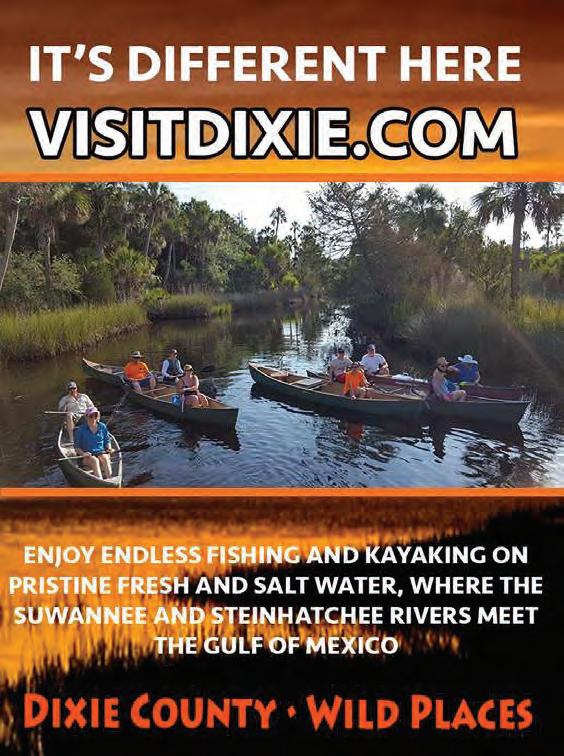



hile there are many ways to target bass, one method consistently stands out— shing with a big worm.

Worm shing may not be the ashiest technique, but it allows you to present your bait from a distance and work it slowly—ideal for tempting big, cautious females that ignore faster presentations.
One of my go-to techniques is casting a Texas-rigged stick bait. It’s a common tactic, but many anglers waste time casting at dead water. I focus on high-percentage areas, such as isolated patches of grass or lily pads. Even when the sh aren’t visible, they o en hold tight to this type of cover. Similar results can be achieved by targeting wood or rock. Make multiple slow retrieves through these areas for best results.
I prefer a larger 6” stick bait in dark colors like black and blue tip. For weights, 1/16 or 1/8 oz keeps the presentation subtle and natural. I recommend 17–20 lb uorocarbon, which o ers strength without sacri cing stealth—braid can be too intrusive here.
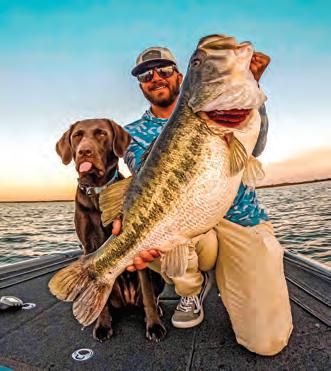
To cover more water and locate active sh, I switch to a big speed worm. While it’s a popular technique in Florida, where I predominantly sh, it works well across the country. !e bait’s vibration drives bass crazy, making it an excellent search tool. Once I nd sh with this method, I slow down and ne-tune my approach with other techniques. For stained water, I like darker colors like junebug; for clearer water, I use green pumpkin with ake. Weight ranges from 1/8 to 1/4 oz depending on depth and wind. Fluorocarbon in the 15–17 lb range is ideal here too.
Another e ective presentation is the wacky rig. It’s a more subtle approach and shines in pressured waters. Like with the Texas rig, I cast this bait weightless to isolated cover. I use lighter line and a spinning setup—typically 10–15 lb leader—adjusting based on cover density. In dirty water, I stick to dark colors; in clearer water, I go with more natural tones.


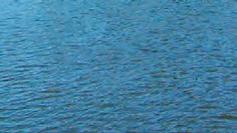

Flipping a worm is another technique I use, especially when there’s a lot of heavy cover. While not as stealthy, ipping allows you to place the bait precisely where other rigs can’t reach. I use large Senko-style baits, braided line, and heavier weights (3/8 to 3/4 oz) to penetrate thick vegetation. It’s perfect for pads, long banks, and heavy wood or grass. !e key is to sh slowly and thoroughly, putting your bait where others haven’t.
Rod and reel setups vary slightly depending on the technique. For most casting and ipping styles, I like a longer rod—around 7’6”— with medium-heavy to heavy action. !e 13 Fishing Omen Series has a few ideal models. I pair these with a high-speed baitcasting reel like the Concept A 7.5:1, which helps pull sh out of thick cover quickly.
For the wacky rig, I downsize to a 7’3” medium-heavy spinning rod. It o ers enough backbone to move sh but also provides the sensitivity and exibility needed when using lighter line. A spinning reel with a smooth drag is crucial. I recommend the 13 Fishing Axum, which o ers the control and power necessary for nesse shing around cover.
!ese worm shing techniques consistently produce. Whether you’re casting to isolated cover, ipping into thick vegetation, or working a speed worm through open water, there’s a big bass out there waiting to bite. I’m excited to put these methods to work—and hope they help you land some giants too.
Tyler Woolcott is a professional tournament angler and guide. Check out his website at www.tylerwoolcott shing.com.








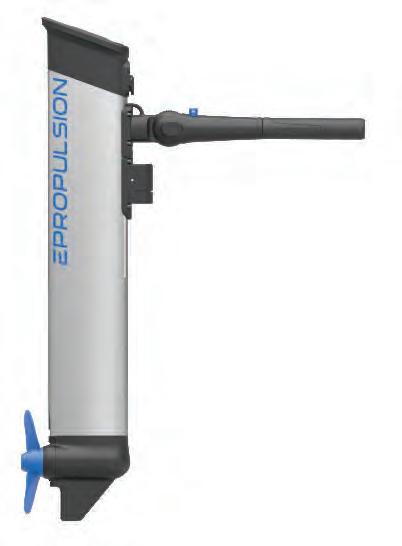





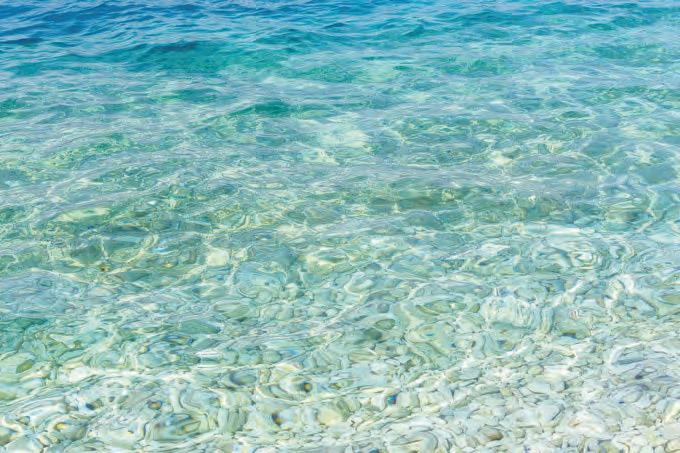







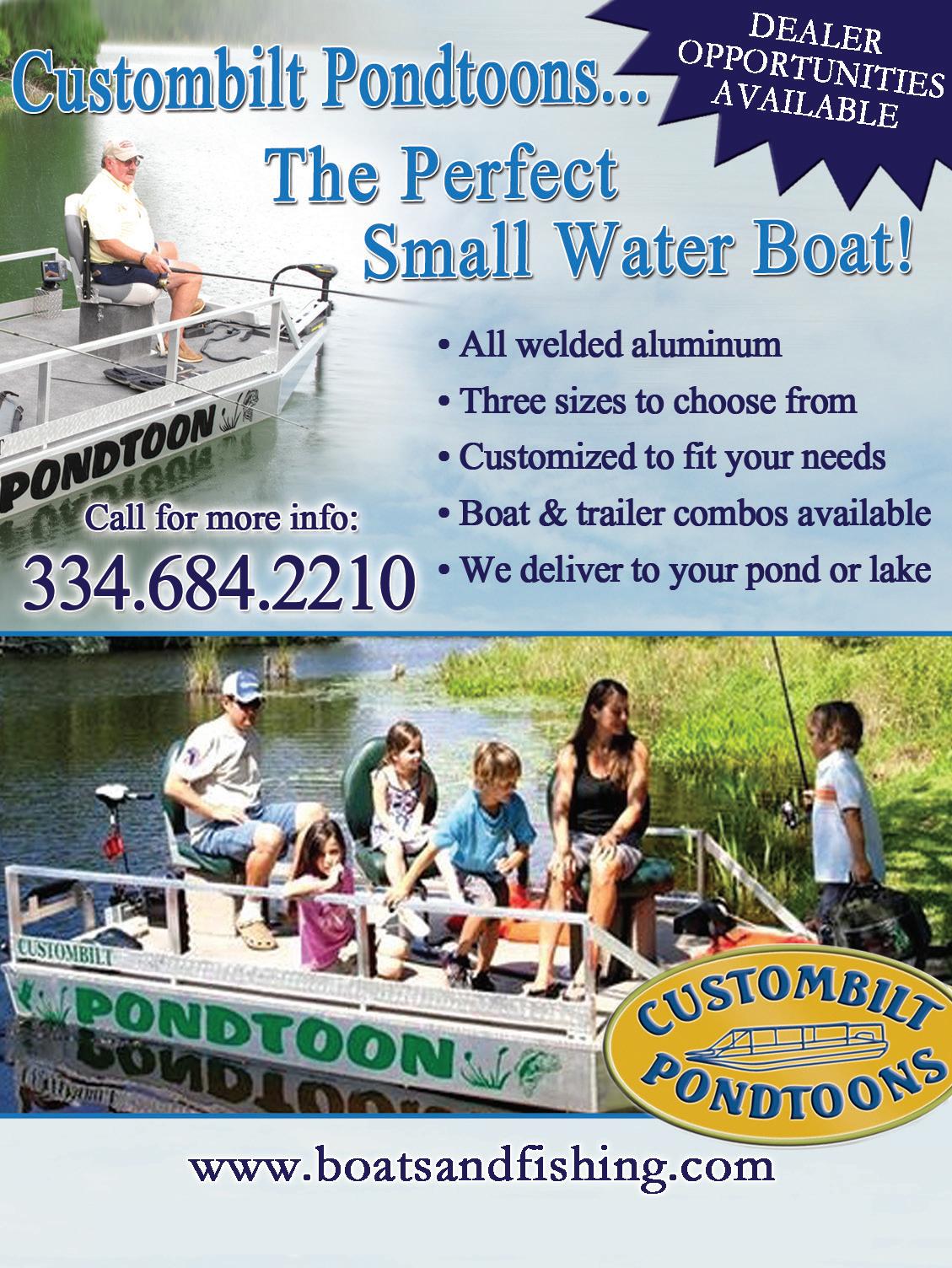

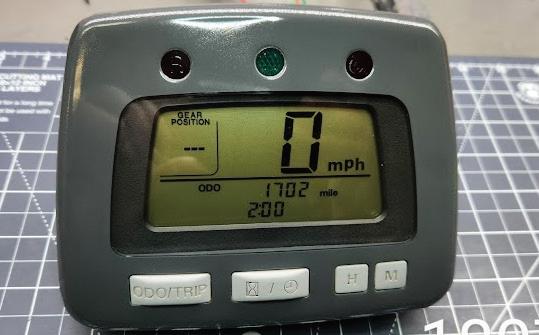
For the third time in less than a year, Georgia has a new freshwater !sh state record spotted sun!sh!
Josh Forsythe of Homerville, GA (Clinch County) landed the newest record catch of 0 lb, 13 oz on May 5 from the Suwannee River. is almost 9-inch catch beats the previous state record tie of 0 lb, 12 oz, according to the Georgia Department of Natural Resources’ Wildlife Resources Division (WRD).

“My 5-year-old daughter and I were !shing for bream on one of my favorite rivers, the Suwannee, when I caught this spotted sun!sh,” said Forsythe. “I have been !shing this river for more than 15 years and it is one of my favorite places to !sh for good-sized bream, especially spotted sun!sh. I recommend waiting until river levels are below 4-foot and using top water bugs to catch giants, but a beetle spin or even a cricket or a worm on a cork will work.”
Spotted sun!sh are found in the Ocmulgee, Oconee, Altamaha, Ogeechee, Ochlockonee, Suwannee, St. Mary’s, Satilla and Savannah River basins. When angling for them, WRD recommends using worms, crickets, small spinners, ies and popping bugs.
“Maybe hearing about that state record tie for spotted sun!sh !red up some folks to land a new record – and we love to see it,” says Scott Robinson, WRD Chief of Fisheries. “Are you the next state record holder? Georgia has the best variety of angling opportunities across the state so Let’s Go Fish Georgia!”
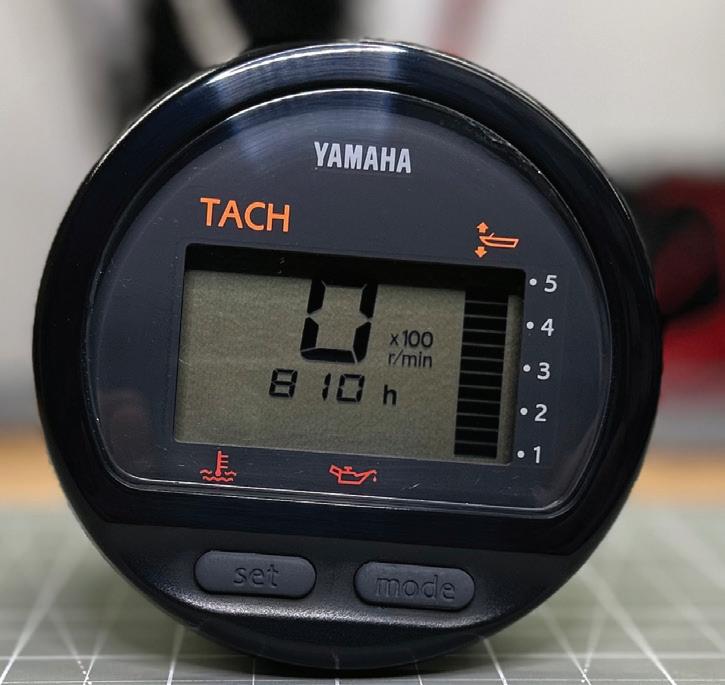

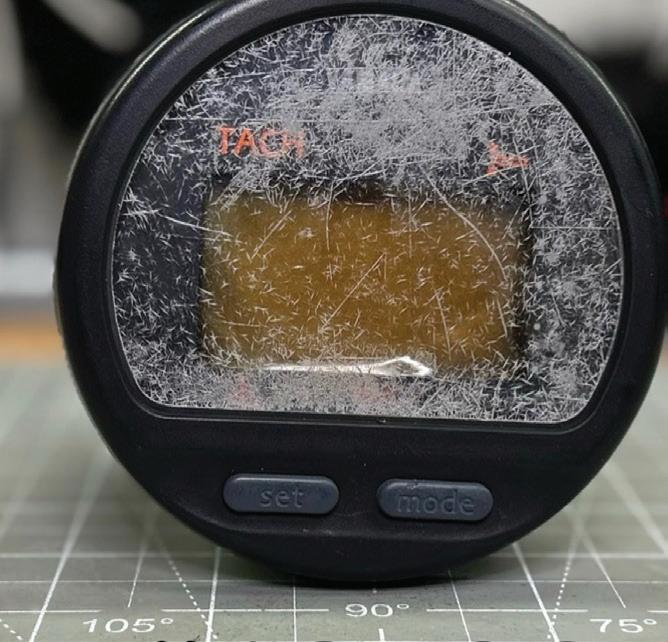



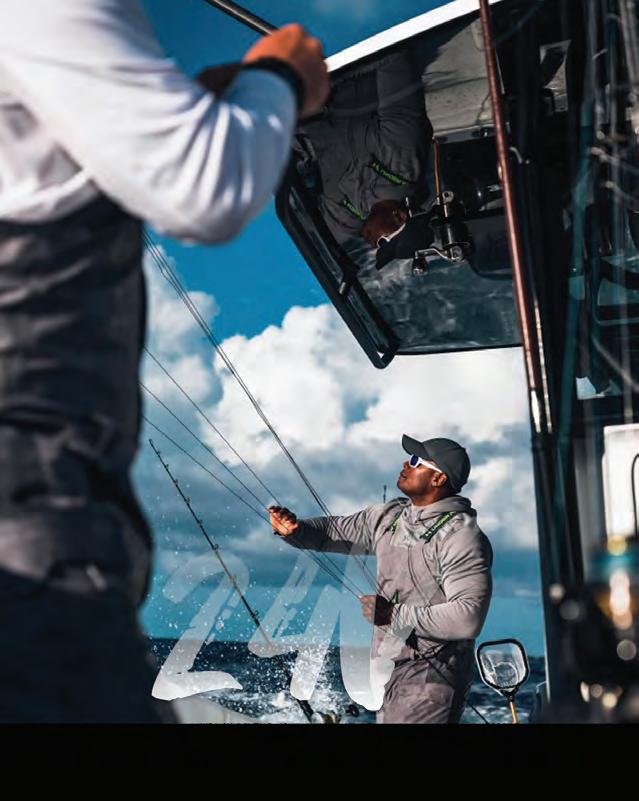



North Carolina‘s Department of Environmental Quality’s Division of Marine Fisheries recently established a new state record for Vermilion Snapper (Rhomboplites aurorubens).
Colby Shaw of Newport caught the 7-pound, 4-ounce sh o Morehead City on April 18, 2025. !e previous state record was 6-pounds, 9-ounces landed out of Ocean Isle in 2009.
Shaw was shing in his own vessel, o shore south of Beaufort Inlet when the sh struck his cut bait. Shaw made quick work of reeling in his state record sh, landing it using his Shimano rod and reel with 65-pound braid.




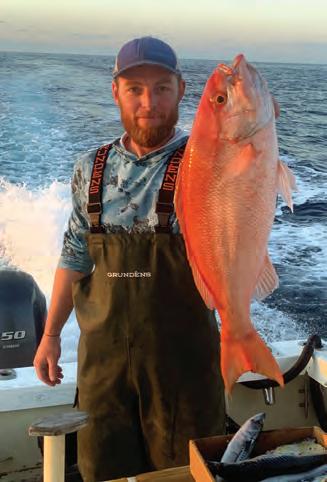
Shaw’s sh measured 23.5-inches fork
to the fork in the tail) and had a 17-inch
sheries sta at the Morehead City Headquarters
!e
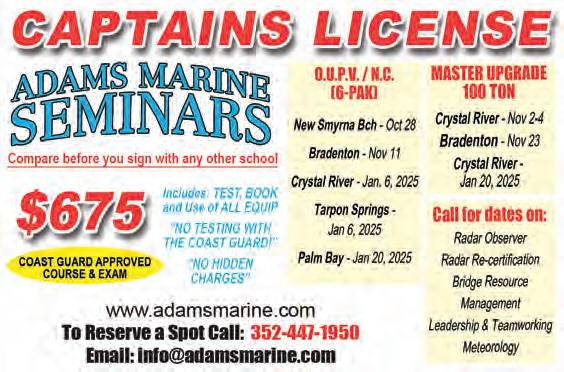



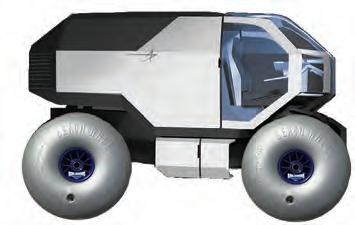

Division of Marine Fisheries.
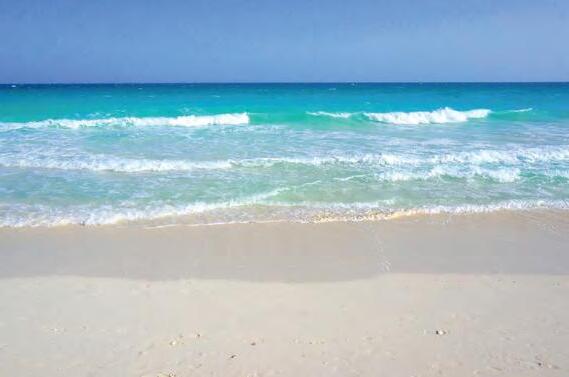








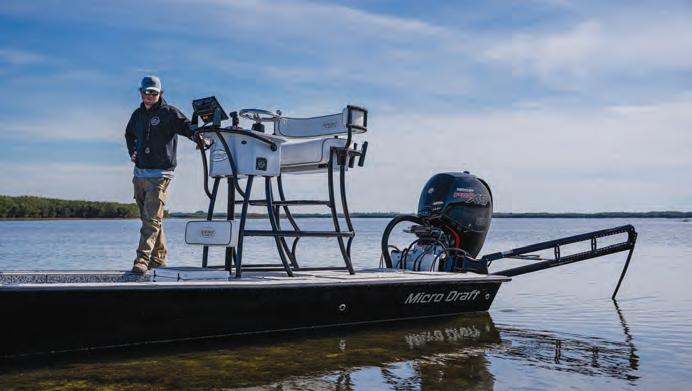






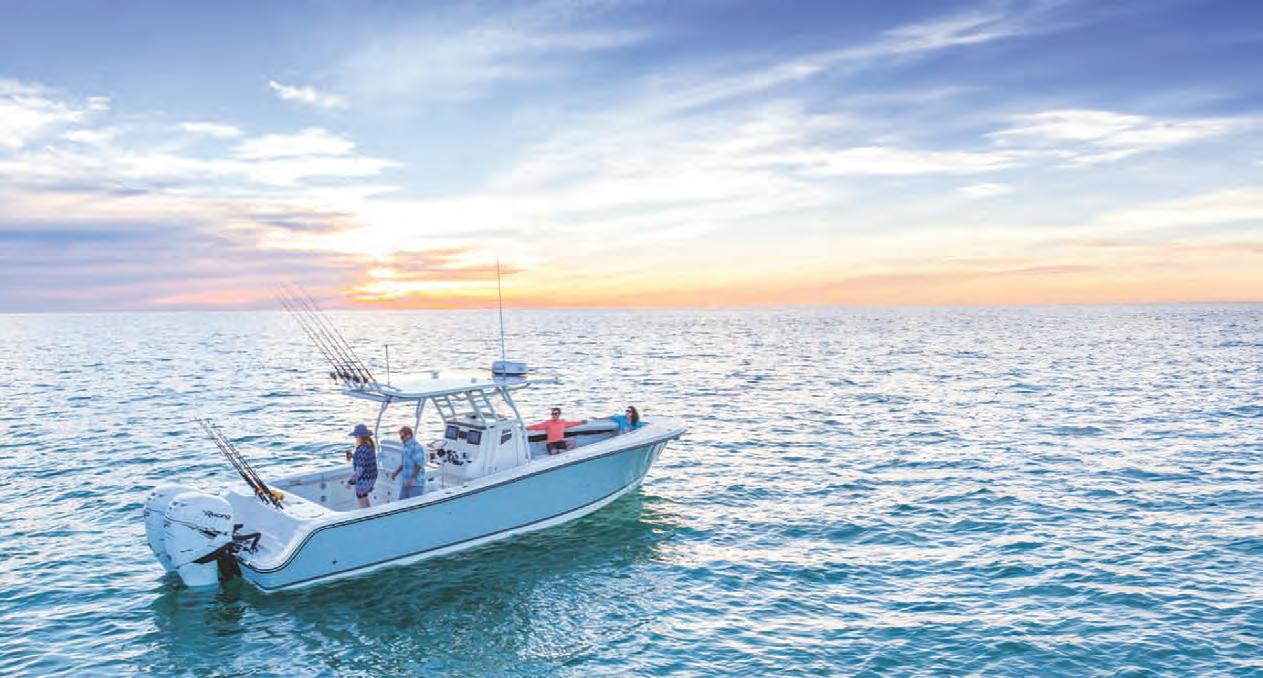


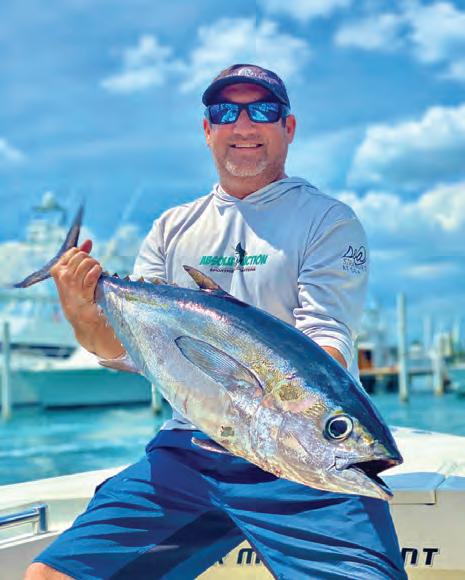





By David Haggard & Heather Lose
Representatives from Tennessee Wildlife Resources Agency, Tennessee Department of Tourist Development, and Tennessee State Parks celebrate the ribbon cutting of the Bill Dance Signature Lakes project at the Bassmaster Classic in Knoxville on March 25, along with the project’s namesake. Photo Courtesy of the Tennessee Department of Tourist Development:


